Growing a Kiwi icon
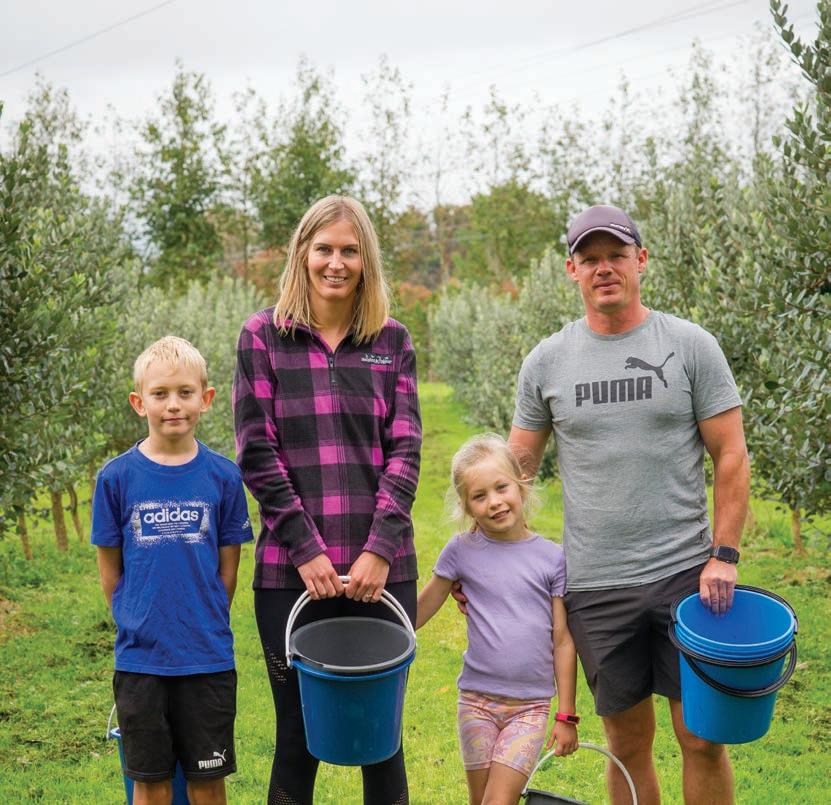
12 Avocado world’s message from New Zealand 32 Otago grower’s domestic success 51 How to steer your business in tough times
Page 26 VOL 96 | NO 04 | MAY 2023 In this issue



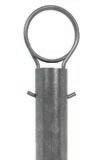



KIWIFRUIT STRUCTURE SOLUTIONS NZ made steel products | Proven reliability | Labour efficient | Built for growth Call Mike 07 282 1538 | agsteel.co.nz AG-BEAM AG-SUPPORT POST AG-Steel Product Range AG-TRIPOST AG-STRINGING POLE AG-BRACE
49 Tools of the biosecurity trade
51 In the driver’s seat: optimising your future
56 La Niña ends – what’s next?

What’s
A regular advertorial section of new products and services. This publication does not endorse the products or services featured here.
58 Tree trunk injection treatment – AvoJect is the solution

59 Productivity, traceability and accuracy are key for ABC
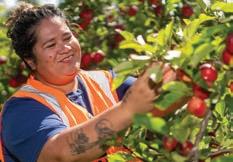

60 From horse floats to harvesters
61 R&D brings new solutions to growers
Up Front 2 President’s Word: International collaboration is needed in today’s world 4 The Chief Executive: Growers under the pump Your Levy at Work 6 Growing Change – a freshwater solution for horticulture 8 Rationing fruit and vegetables in New Zealand? Your Industry 11 Insurance does not cover tornado damage 12 Growers share hope at 10th World Avocado Congress
Orchard worker wellbeing front and centre in Central Otago football 20 Three women are finalists
Māori grower award 22 Banking on an avocado bounty 26 Starting out with a Kiwi icon – feijoas 32 Cromwell orchard branching out 38 Women don’t want quotas – just the same ‘starting blocks’ 42 Berryfruit scientist won’t stop ‘growing something’ 45 The power of positivity
16
in
Technical
New
Contents MAY 2023 12 16 20 26 The ORCHARDIST : MAY 2023 1
International collaboration is needed in today’s world
Last month I had the pleasure of attending the World Avocado Congress in Auckland, and it made me think on the need for global collaboration.
Barry O’Neil : HortNZ president
Recently I said we need to find ways to collaborate better within New Zealand, but hadn’t thought too much about this in a global sense. I have observed however, that while we might at times say the right things about collaborating internationally, the reality has been more that we cherry-pick what we collaborate on in the belief that we will benefit more directly by not being fully transparent, and that greater collaboration would be detrimental to our own opportunities and aspirations.
The 10th World Avocado Congress had the largest number of global attendees for a New Zealand horticultural event ever, with more than 750 people coming from 33 countries, and in total 1160 attendees. A big shout out and congratulations to Jen Scoular and team NZ Avocado for firstly winning the rights to host the congress, and then secondly making this awesome event happen. Fantastic achievement!
I was really impressed by the willingness of the international speakers to openly share both the challenges and opportunities for their sector globally. The science being undertaken, including the collective investment involved, was very impressive, with excellent presentations on many significant areas for New Zealand growers. This includes the breeding of new varieties along with more drought and disease tolerant rootstocks, production methods and planting systems to increase productivity (including trellising), and ways of improving storage to extend fruit shelf life for transport and marketing.
New Zealand with 4000 hectares of avocado production is tiny compared to the world total of 490,000 producing hectares, and while our growers and NZ Avocado do a great job within their means, it would be naïve to believe we as a country can afford or achieve all that is required for future success. Just the research needed, for example, to increase orchard production by addressing biennial
bearing is huge. For many of our avocado orchards producing only 5 tonnes per hectare, it would mean raising this closer to the few producing 20 tonnes per hectare.
Avocados are big business worldwide, currently estimated at over US$9 billion in fruit value and likely to be $20 billion in 2027. Internationally 2.5 million tonnes were traded in 2020–21, making up 3.6 percent of the global fresh fruit trade and eighth on the list – bananas of course being number one. Of all fruit categories there is a staggering 70 million tonnes of fruit traded each year internationally, valued at US$85 billion.
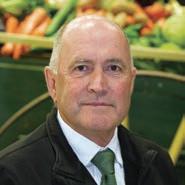
And avocados are even more impressive when it comes to the value of trade, US$6.6 billion or eight percent of global fruit trade, and fourth on the list, behind only bananas, grapes and apples.
Mexico is the biggest exporter by far, at 1.5 million tonnes, and these large volumes have had impacts on other producing countries, especially in California where the production area has halved over the last decade due to in part to increased input costs, especially for water, but also market prices staying static due to the volumes of imported product.
And increased production is forecast to see an excess of supply of possibly up to 30 percent by 2026, from a balanced supply situation in 2021. Amazing growth, so there are absolutely going to be challenges, but opportunities are very much still present, especially when 50 percent of world exports are to the United States, and another 30 percent to the European Union and United Kingdom, which leaves the rest of the world consuming only 20 percent of the global production.
If producing countries focus collaborative efforts and resources on getting the 20 percent of the world, seven billion people, to increase their consumption just a little,
2 The ORCHARDIST : MAY 2023 PRESIDENT’S WORD
the market is huge. But if we continue to operate in isolation, due to the scale of the challenge there is unlikely to be significant movement.
Avocados like most fruit and veggies are great nutritionally, which is a major lever to use in our promotion efforts. And when only 10 percent of consumers in the United States are meeting daily fruit and vegetable consumption requirements for a healthy diet, even the US market still has huge potential. Unfortunately, trends worldwide have seen global obesity increase significantly, with over 40 percent of adults being classified as overweight. People don’t want to be or like being overweight, and countries don’t want their people overweight especially due to the health costs. Enabling and supporting people to eat healthy fresh fruit and vegetables is the number one way to address this problem. Sadly, the statistics also indicate more than three billion people in the world can’t afford a healthy diet, due to it being two to five times more expensive than an energy and nutrient sufficient diet – or putting that another way, junk food is far too cheap compared to good food!
That doesn’t make sense or seem right, and while we are working on getting our government and its policy makers in New Zealand to address this, we also need to see change around the world. By working together with what we have previously seen as our competitors, we will have the best chance of promoting to consumers this great healthy product, and will achieve the scale needed giving us all a far better chance to influence consumers purchasing decisions.
My conclusion is that we all can and will benefit when we share information with our domestic and international counterparts, about how we can achieve better outcomes for the wider fruit and vegetable sectors, including research and alignment of efforts to address customer and consumer needs. In a global world, and even as competing countries, we need to avoid doing things that cause division, that create a ‘them and us’, as that will only cause confusion and damage to the category.
The world nowadays is so connected and information on nearly everything is freely available, that if we are not fully transparent and collaborating openly with others, it might be interpreted as having something to hide…
Yes, there are head winds ahead for avocados, as with other sectors in horticulture in New Zealand, but we do have the opportunity to work collaboratively not only within New Zealand, but also with other producing countries to make a difference. Individually as companies and countries we are too small when it comes to achieving critical mass and scale internationally for the changes and outcomes that are needed.
Kia kaha.
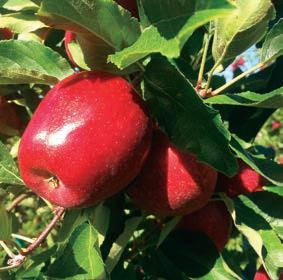
ENABLING GROWERS TO BE WORLD LEADING 021 827 831 vicky@gnl.nz mike@gnl.nz 021 242 6400 BUDDING NOW Have you placed your 2024 & 2025 orders?
Growers under the pump
The horticulture industry is not asking for special favours. We are just asking for the opportunity to get ourselves back on the trajectory we were on before the myriad of extreme weather events.
Nadine Tunley : HortNZ chief executive

The pictures of silt-covered orchards may no longer dominate the 6 o’clock News, but for those affected – the growers, their employees and their whānau – the aftereffects of Cyclone Gabrielle still hit hard. To add insult to injury, the government increased the minimum wage on 1 April, and scheduled a ten percent increase on top of that for the Recognised Seasonal Employer (RSE) scheme – effective 1 October.
Many growers still do not know the timeframe for getting their land back into production or the next crop to market. Northland, Bay of Plenty, Tairāwhiti and Hawke’s Bay are the fruit bowl of New Zealand for good reason. Their soil is, or at least was, rich with the necessary nutrients to support the nearly $7 billion New Zealand horticulture industry. However, silt has not only destroyed the plants that were growing on that land when the cyclone struck, it has
suffocated the soil structures, which means many crops may never be able to be grown on this land again. Experts predict it will take 50 to 100 years to get the soil back to what it was.
All this has come at a time when growers are already under immense pressure. RSE workers, who have come here every season for the past 15 years from our Pacific neighbours, fill shortfalls in domestic employment and help keep our successful horticulture industry alive.
Growers affected by Cyclone Gabrielle are grateful for the government’s financial support, but one-off grants or loans only offer temporary relief.
Approximately one-third of our horticulture yield is sold domestically. The rest is exported. Internationally, we are price takers, meaning we can only get the price the world market sets. Domestically, where they can, growers
Editor:
Andrew Bristol
Ph: 021 021 62 021
Email: andrew.bristol@hortnz.co.nz
Advertising Manager:
Jackie Enright
Ph: 04 494 9986
Mobile: 0274 489 913
Email: jackie.enright@hortnz.co.nz
Design:
Scenario.co.nz
Ph: 04 385 9766
Email: joy@scenario.co.nz
Subscriptions:
Email: info@hortnz.co.nz
AT WORK
This publication uses vegetable based inks and environmentally responsible paper produced from Forest Stewardship Council® (FSC®) certified, Mixed Source pulp from Responsible Sources.
Paper produced using Elemental Chlorine Free (ECF) and manufactured under the strict ISO14001 Environmental Management System.
The wrapper we use is 100% recyclable, it is LDPE 4 (Low Density Polyethylene) Soft Plastic and meets the required standards. For further information refer to: https://www.recycling.kiwi.nz/our-story
THE CHIEF EXECUTIVE
will need to factor into their prices the increased cost of production. This will put further inflationary pressure on households when they can least afford it.
I have spoken with growers who are contemplating their future in a post-Gabrielle world. The latest round of wage cost increases is likely to mean they either do not rebuild and replant, or if they do, it will be on a reduced scale.
The cyclone-affected horticulture industry is facing increased costs across almost every aspect of growing
This is not about wanting to pay RSE workers less. They are an important part of the ecosystem, not only in our domestic economy but for the Pacific Islands, where the money they earn in New Zealand provides an important lifeline.
The RSE scheme is not perfect – no scheme is. There are a few bad actors, which is why the horticulture and viticulture industries are working closely with the government and the Pacific on a review to address the issues.


The forced increase in RSE wages will hurt the good actors – by far the majority – the most. These are the growers who have already invested significantly in their RSE workforce. They travel to the Pacific Island communities from where their workers come, to nurture long lasting and trusted relationships. They build practical and culturally appropriate accommodation for the workers when they are in New Zealand. It is their slimmer margins that cannot sustain an inflexible wage environment.
It is always challenging when the government forces employers to pay workers from overseas more than they would pay New Zealanders for the same work.
The cyclone-affected horticulture industry is facing increased costs across almost every aspect of growing. Insurance helps, but it doesn’t cover everything. It doesn’t provide for increased supply chain costs because it is now harder to get produce to market. It doesn’t accommodate additional employee flexibility because they need to be able to clean and rebuild their own homes.
Our industry is working closely with the government to collect information on the extent of the devastation: what has been affected, what is needed to rebuild and how long this will take. The government has stated it is committed to the rebuild, but announcements like the minimum wage and RSE wage increases undermine this commitment. The government may have delayed the additional ten percent increase for RSE workers by six months, but we are two months post-Cyclone Gabrielle now, and affected growers still have no certainty around where they can even begin to rebuild, let alone how.
The government’s minimum wage and RSE wage increases undermine its stated commitment to help growers rebuild
In the immediate aftermath, local communities were deeply grateful for RSE workers’ support for cleaning up orchards and homes. But these RSE workers rely on there being a vibrant horticulture industry for them to participate in, year in and year out.
The government needs to support the horticulture industry to ensure there are jobs for these vitally important employees to return to next season.
Registrations now
Earlybird
end on 26 May. For more information and to register: https://conferences.co.nz/hort2023 The ORCHARDIST : MAY 2023 5 THE CHIEF EXECUTIVE
open.
registration rates
YOUR LEVY AT WORK
INDUSTRY WIDE ISSUES FOR INDUSTRY GOOD
Growing Change – a freshwater solution for horticulture
Ailsa Robertson : Growing Change project manager
Horticulture New Zealand is leading an exciting new project to support growers to demonstrate how they are meeting freshwater requirements. The project, Growing Change, is a partnership between HortNZ and the Ministry for the Environment (MfE) over a three-year period to deliver ten catchment projects, and a national Freshwater Farm Plan training programme on the knowledge, practices and tools available to manage freshwater risks from horticulture. Growers produce safe, fresh and high-quality nutritious food for New Zealand consumers, and need to continue to do so as our population grows. Through our Good Agricultural Practice (GAP) programmes, growers have a pathway to demonstrate how they are meeting consumer and regulatory expectations, including environmental risks. An audited and certified freshwater farm plan is evidence that growers are managing environmental risks appropriately.
Growing Change will use industry-specific solutions to freshwater challenges in key growing catchments.
The horticulture industry is diverse, with over 100 crops grown. The range of growing systems, from orchard to crop rotation to glasshouse, means that growers use practices that are unique to horticulture to successfully manage freshwater risks.
Growing Change will serve as a vehicle to tell the grower story – and that of the wider industry – of the proactive and effective work growers are undertaking to manage environmental risks.
The work programme
The government is committed to work with industry to develop a pathway that recognises industry assurance programmes like GAP in the freshwater farm plan regulations. Such a pathway would need to be underpinned by robust standards and aligned to the regulations. In this way, GAP and its members are positioned to meet the requirements. Growing Change will use GAP systems, and the Environment Management System (EMS) add-on, to audit and certify freshwater farm plans.
Call our experts 0800 130 905 www.irrigationexpress.co.nz
Growing Change will be running several catchment projects each year. The first catchments are Waimea Plains in Tasman, Lake Horowhenua in Horizons, and Central Otago/Southland. Subsequent projects are planned for Auckland/Waikato, Canterbury, Ohakune and Bay of Plenty for later in 2023. These projects will support growers to develop freshwater farm plans using the EMS add-on to GAP. HortNZ will connect with Product Groups and District Associations to plan catchment projects.

Online Orchard Irrigation Supplies
6 The ORCHARDIST : MAY 2023
The EMS was developed for regional council Farm Environment Plan (FEP) requirements, as a way for growers to demonstrate how they are managing nutrients, soils, irrigation, biodiversity and waterways. The EMS has been recognised by councils in Canterbury and Gisborne as meeting their FEP requirements. More recently the EMS was trialled alongside MfE freshwater farm plan pilots.
Growing Change will be running several catchment projects each year
HortNZ’s new team of Regional Extension Officers (REOs) – Arjune Dahya, Joe Tahana, Mark Shelly and Chelsea Donnelly – joined HortNZ at the end of 2022 and will be leading the catchment projects. As well as the catchment projects, the Technical Advisory Group will serve to oversee the appropriate design of learning modules based on industry environmental codes of practice, and the Ahumāra Kai Advisory Group will support Māori growers and oversee a Mātauranga Māori work programme.
Timings and requirements for growers

Where can I get help / How do I proactively get ahead of the regulations?

Sign up to your catchment project and get a variety of support to develop your GAP EMS freshwater farm plan. Catchment projects will be advertised in the HortNZ newsletter, including who to contact. HortNZ is establishing a page on our website where you can find more information on catchment projects in your region. In the meantime, growers can email info@hortnz.co.nz and your message will be passed on to the right person in our team.
Who needs a Freshwater Farm Plan?
The Resource Management Amendment Act 2020 (Part 9A) requires farms with five or more hectares of horticultural land to have an audited and certified freshwater farm plan. Horticultural land means land used to grow food or beverage crops for human consumption (other than arable crops), or flowers for commercial supply. Farms with mixed land uses of 20 hectares or more, for example, whether horticulture, arable or pasture, will also need a freshwater farm plan. The regulations that will give effect to Part 9A are expected to be released in May 2023. They will contain more detail on
what needs to be included in a freshwater farm plan, who is responsible, when and where the requirements apply, and more.
When will Freshwater Farm Plan regulations come into effect?
MfE will roll out freshwater farm plan regulations gradually across the regions. Southland and Waikato are the first two regions where the regulations will come into effect in the second half of 2023. MfE will announce and roll out regulations for other regions progressively over the next two to three years.
Horticulture New Zealand Notice of the 18th Annual General Meeting
Call for Notices of Motion
Any Board Member, Affiliated Organisation or Active Grower Member wishing to have a matter considered at the AGM must give notice in writing to the Chief Executive of Horticulture New Zealand of the notice of motion no later than Tuesday, 13 June 2023 at 10.00am. Notices should include the wording of the motion to be voted on and up to one A4 page of explanatory notes. Notices of motions will be listed on HortNZ’s website www.hortnz.co.nz on 20 June 2023 and will feature in the HortNZ magazines (July issue).
Te Pae Christchurch Convention Centre Business 1 Welcome and Apologies
Voting and Proxies
Obituaries
Approve Minutes of
President’s and Chief Executive’s Report on HortNZ’s Activities
Approve Audited Financial Statements for year ended 31 March 2023
Levy Rate
Director Remuneration
Approve 2023/24 Budget
Approve Auditors for 2023/24
Notices of Motion
General Business
Thursday 3 August 2023 at 1.00pm at
2
3
4
the 17th AGM 5
6
7
8
9
10
11
12
The ORCHARDIST : MAY 2023 7 YOUR LEVY AT WORK
Rationing fruit and vegetables in New Zealand?
New Zealand society has an opportunity right now to put a value on food security for its citizens. In the name of public good, New Zealand will prioritise the domestic production of vegetables and fruit, recognising them as a fundamental necessity to human health.
Bernadine Guilleux : HortNZ vice-president

The government’s Biodiversity policy Te Mana o te Taiao – Aotearoa New Zealand Biodiversity Strategy 2020 recognises wetlands as crucial infrastructure to our natural environment. So too we need a policy that recognises the importance of our produce within the bounds of human biology.
At the time of writing this opinion piece, news of fruit and vegetable rationing in the United Kingdom arrived on our shores. What I found interesting about this has not been the fact that the Brits couldn’t buy more than two cucumbers at a time, but that the reasons for this calamity were very much disputed. Various reasons were cited – Brexit; that Spanish and North African growers preferred to send their production to higher paying, easier access markets; bad weather; and increased energy prices. Without a clear-cut reason such as we had in New Zealand with our devastating weather events, it seems that the United Kingdom example was a convergence of multiple factors – with all the above occurring at once. The takeout for me is that those vegetable staples in high demand and short supply in the UK were all imported.
Whether we like it or not, higher vegetable and fruit consumption is directly correlated to households with higher levels of education (OCED, 2015). Higher fruit and vegetable consumption also tends to occur where those same vegetables and fruit are grown. The government putting a societal value on vegetables and fruit would not only give growers the confidence to keep doing what they are doing, but would also help educate the public about just how much of a priority these products are within the household budget. Did you know that the words vegetables and fruit did not feature once in the Treasury
Background Paper that fed into the government report Te Tai Waiora: Wellbeing in Aotearoa New Zealand released last year?
You will likely have noted that the term ‘food security’ is being used quite a lot lately. It was officially used first in 1996 by the Food and Agriculture Organisation of the United Nations. The report from the FAO World Food Summit in that year states that “Food security exists when all people, at all times, have physical and economic access to sufficient, safe and nutritious food that meets their dietary needs and food preferences for an active and healthy life”.
This has been a driver for the United Nations to steer policy direction in member countries, including in New Zealand, and this is where our industry really needs to come to the fore.
It’s time to be bolder about advocating for proper education on vegetable and fruit consumption
A key concept is stability – to be food secure, a population, household or individual must always have access to adequate food. They should not risk losing access to food as a consequence of sudden shocks (such as an economic or climatic crisis) or cyclical events (such as seasonal food insecurity).
8 The ORCHARDIST : MAY 2023 YOUR LEVY AT WORK
The media interest really peaked in the UK recently with the use of the term rationing (a term which has been deeply embedded in the British psyche since World War I) – and the environment minister retorted at the time that perhaps the British should try selecting (domestically grown) seasonal produce instead – such as turnips, which have had no cost increase. Switching out a cucumber for a turnip as a daily staple requires more than shopping behaviour change.
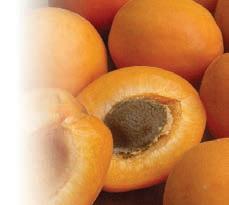

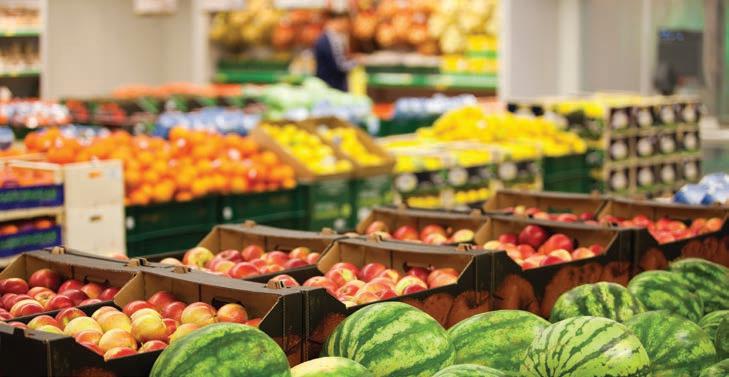
The ability of the New Zealand government to influence the relatively rapid decline of tobacco consumption in this country started with education. So, for the sake of public interest, it’s time to be bolder about advocating for proper education on vegetable and fruit consumption. Then perhaps the switch from one vege to another, according to what is seasonally available, won’t sound so absurd.



Est 1956 L.E. Cooke Nurseryman Ltd Ltd
your fruit tree Try us first for requirements! Marty & Kelli Cooke 75 York Road, Longlands, Hastings, 4120 PH: 06 870 7043 EMAIL: lecooke@xtra.co.nz CELL: 0274 396 205 (Marty) Proudly serving the fruit industry for 67 years •Pears •Plums •Apples •Apricots •Cherries •Peaches •Nectarines www.lecooke.co.nz The words vegetable and fruit did not feature once in the Treasury Background Paper that fed into the government’s wellbeing report Te Tai Waiora Wellbeing in Aotearoa New Zealand 2022 Te Tai Waiora Wellbeing in Aotearoa New Zealand 2022 B.43 The ORCHARDIST : MAY 2023 9 YOUR LEVY AT WORK
L.E. Cooke Nurseryman Growers of high quality fruit trees
YOUR INDUSTRY
ACROSS THE SECTOR — ACROSS THE COUNTRY
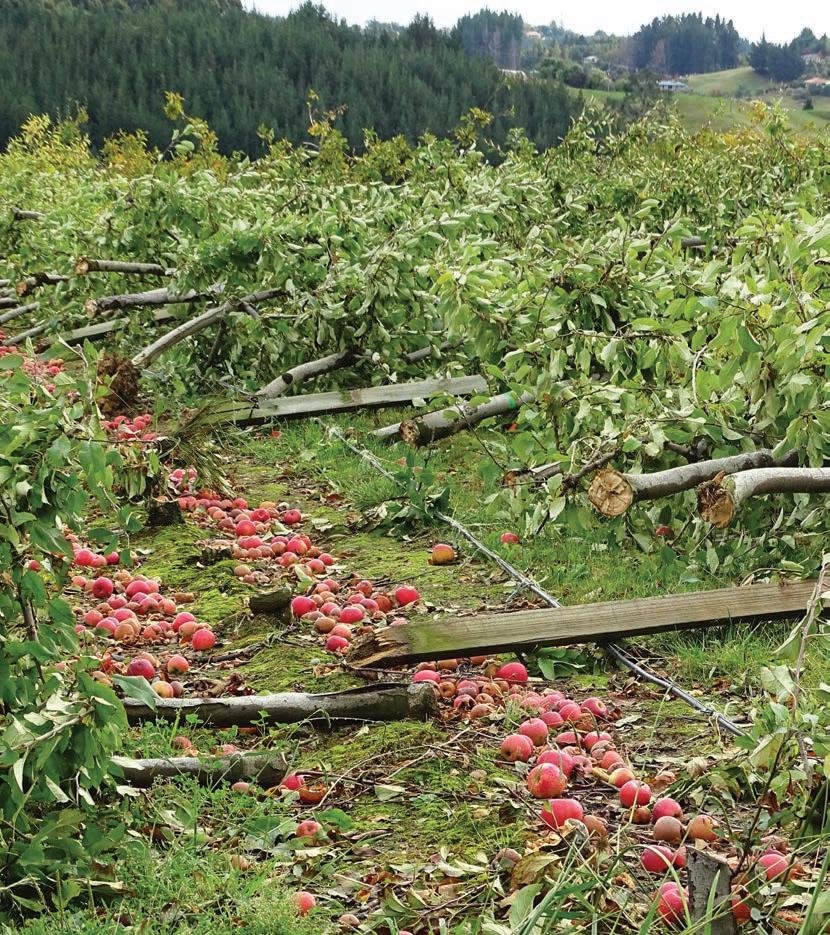 Apple trees flattened by the tornado that came down near Māpua
Photo: Anne Hardie
Apple trees flattened by the tornado that came down near Māpua
Photo: Anne Hardie
Insurance does not cover tornado damage
Thawley Orchard near Māpua has its apple crop insured, but that does not provide cover for the tornado that blasted through its orchard on Easter Monday and ripped trees apart.
Anne Hardie
A line of well organised thunderstorms moved through the upper South Island on 10 April with strong, squally winds. This line was wrapping around a low-pressure system that was located just west of the South Island, and had the potential for damaging winds and a possible tornado. MetService flagged the risk and a Severe Thunderstorm Watch was issued for the Tasman and Nelson Regions between 12:47pm and 3:30pm.
The tornado ripped through the middle of the Thawley Orchard and Leigh Thawley says it destroyed about 4ha of trees, including blocks with a crop still on the trees. He estimates up to 5,000 cartons of apples have been lost, equating to about $200,000 of income, and the orchard faced a big clean-up bill as well.
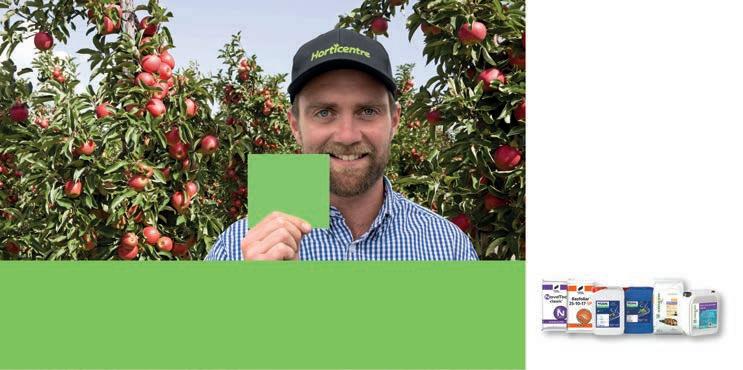
Their insurance covers hail and flood, but he says tornados which are classed as high winds are not covered. The family is still assessing the damage to the trees left
standing, and also fruit on trees alongside the tornado’s path.
“It dropped trees all over the place and pulled strainer posts out. Some of the trees still standing look okay and then you find they’re sheared off at the rootstock.”
The tornado came down over the hill, leaving a gaping hole in a block of the family’s pine trees, and then across the orchard to shred an area of pine trees the other side, where some of their hail netting ended up.
Thapi Makgabutlane, Meteorologist at MetService, says winds at Nelson Airport reached 63km/h, but it is likely that localised winds, such as those experienced in Māpua, were much higher than that. The speed with which the line of thunderstorms moved through the area is also a testament to the high winds that were associated with these thunderstorms.
The ORCHARDIST : MAY 2023 11 YOUR INDUSTRY
It dropped trees all over the place and pulled strainer posts out
Growers share hope at 10th World Avocado Congress
The 10th World Avocado Congress was phenomenal. At Auckland’s Aotea Centre from 2 to 5 April, New Zealand hosted 1,160 delegates from 33 countries under one roof – all talking passionately about avocados, as well as sharing, learning, listening and taking action to grow the global avocado industry.

Supplied
The programme was complimented for being well setout, the keynote speakers were impressive and their content aligned well through the three days of academic programme, over 130 presentations across four different break-out sessions. Jen Scoular, President of the World Avocado Congress Committee and chief executive of New Zealand Avocado, says the congress was an opportunity to put New Zealand and the New Zealand avocado industry on the world stage.
“Over 750 international delegates joined us in New Zealand, many for the first time, and loved being surrounded by our Kiwi hospitality and values. Though we only produce about two percent of the global avocado supply and we’re the ninth largest avocado exporter in the world, avocados are Aotearoa’s third largest horticulture export behind kiwifruit and apples.”
The congress programme opened by painting a picture of an industry determined to face its challenges.
12 The ORCHARDIST : MAY 2023 YOUR INDUSTRY
The opening ceremony was electric, with a formal welcome from Ngāti Whātua, a performance by Te Mauri and addresses from Hon Meka Whaitiri and Jen Scoular
Growth in avocado production has increased the industry value to US$9 billion currently, forecast to rise to $20 billion by 2026. Keynote speaker Eric Imbert highlighted a significant challenge for the sector – global supply is likely to outpace global demand within the next few years unless demand is built.
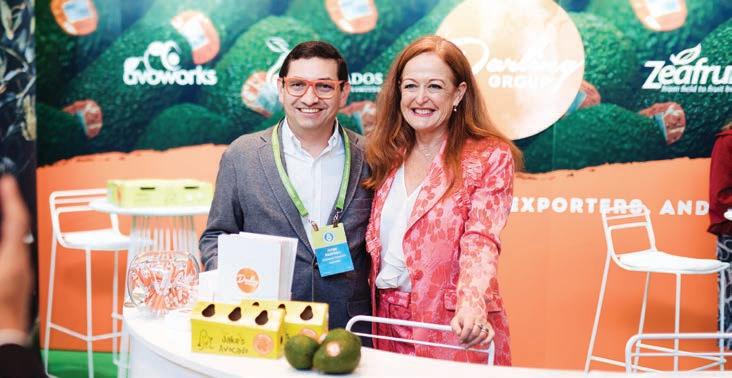
Lain Jager shared how wonderfully positioned the avocado is to provide much needed plant-based protein in a world obsessed with the trendy, nutritionally dense avocado that meets the needs of vegetarian, vegan, low salt, low sugar diets. Lain started with pretty gloomy global food trends but brilliantly segued into how an aging, increasingly wealthy global population could be very well served by the amazing avocado – the only fruit with protein, good fats and carbohydrate. Lain highlighted the absolute need to invest in marketing these amazing attributes of avocado, recognising the need to invest to capture value.
Highlighting the theme of respectfulness – respect for people, respect for environment, respect for our future, keynote presenters acknowledged the very positive steps being taken across the industry and highlighted the need to take back the sustainability narrative, to stop the pull of big media players picking the industry to pieces.
Cathy Burns, chief executive of the International Fresh Produce Association, highlighted the trends in produce, from innovative ways to capture carbon, or to grow spinach without soil-water culture, to use robots, and the growing trend of food as medicine. Professor Sarah McLaren shared insights about life cycle assessments before the presentation of the avocado life cycle assessment by
Set on 4.5 ha just north of Hokitika on the West Coast. The cranberries are planted in 8 beds on 2ha of the property. Purpose built sheds include a large 13 x 9 m packing shed with a roller door, storage, freezer space, chiller, and certified commercial kitchen.
The Cranberry farm is currently up and running as an online business selling top-quality products to supermarkets and specialty food stores nationwide, as well as selling fresh and frozen Cranberries and products. Other sheds include two bay workshops with a separate standalone shed and a studio unit. All the hard work has been done in setting up this business, and all structures are in place for development.
www.pggwre.co.nz/GRE37073
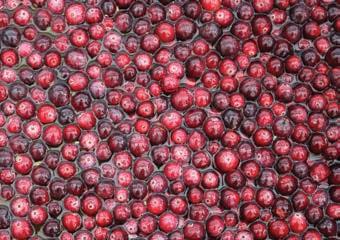 Corpohass Colombia’s Jorge Restrepo with Jen Scoular, President of the World Avocado Congress Committee and chief executive of New Zealand Avocado
Corpohass Colombia’s Jorge Restrepo with Jen Scoular, President of the World Avocado Congress Committee and chief executive of New Zealand Avocado
RURAL | LIFESTYLE | RESIDENTIAL Helping grow the country PGG Wrightson Real Estate Limited, licensed under the REAA 2008 FOR SALE
COAST Cranberry Farm Opportunity F OR SALE $770,000 Plus GST (if any) Sharyn Overton M 027 272 7032 sharyn.overton@pggwrightson.co.nz The ORCHARDIST : MAY 2023 13 YOUR INDUSTRY
WEST
Massey University and NZ Avocado. Florence Van Dyke shared her sustainability values, successfully incorporated into her company, Chia Sisters.
The programme ended with the World Avocado Congress committee, two representatives from each producing country, sharing the stage with the president to confirm their call to action to build demand, and to take back the narrative on sustainability. The next meeting in six months’ time at Asia Fruit Logistica will discuss how countries are acting on that promise, and what can be done better collectively. A vote from delegates elected South Africa as the host for the 2027 World Avocado Congress.
The congress was sponsored by international sponsors Mission Produce, MAF RODA Agrobiotic, TOMRA Food, and national sponsors Darling Group, AVOCO, Radfords, Seeka, AgMardt and the Ministry for Primary Industries. The event was supported by Plant & Food Research, New Zealand Avocado, Tourism New Zealand, Tātaki Auckland Unlimited, the Hass Avocado Board, Horticulture New Zealand, Zespri, Mainfreight, and Oji Fibre Solutions.

Jen says that sponsors were very happy with their participation, reporting great engagement, good business and lots of new contacts.
“Feedback has been fantastic,” Jen says. “We met all the targets and the atmosphere throughout the congress was phenomenal. Laughter, smiles, hugs and handshakes ruled every break. New connections, old connections. At the event everything ran smoothly, it was slick, professional and boy it was fun. What great visibility and connections for our industries and for New Zealand.”
AVOCADO FIELD DAYS
A highlight of the World Avocado Congress was the field days programme, with 760 delegates choosing from eight different excursions to some of New Zealand’s top avocado venues. In Katikati, delegates could visit the Watchorns’ top-performing orchard, the Darling Group’s Just Avocados packhouse, Uretara Orchard and kiwifruit at the Riverview orchard.
In South Auckland they could hear from scientists from Plant & Food Research at David French’s avocado and kiwifruit orchard in Glenbrook. Further north, options included Southern Paprika Limited in Warkworth, Harbour Edge Avocados Ltd in Tapora, Lynwood Nursery in Whangarei, New Zealand’s largest avocado tree nursery, and Land of the Lotus.
“Field days were an enormous task to organise,” Jen says, “but 760 delegates got on the right bus over two days to go to the right location. Delegates loved being hosted by enthusiastic kiwis, were thrilled with the information they absorbed, and made friends on the bus rides. We included agritech companies at the venues, Plant & Food Research presented their diverse scientific knowledge, and we added kiwifruit and tropical orchards to ensure a wider view of New Zealand’s horticulture sector was shared.”
 The impressive keynote speakers aligned well through the three-day academic programme with more than 130 presentations
The impressive keynote speakers aligned well through the three-day academic programme with more than 130 presentations
14 The ORCHARDIST : MAY 2023 YOUR INDUSTRY
Delegates visiting the Darling Group’s Just Avocados orchard during a World Avocado Congress field day
Avocado growers in New Zealand
1400 growers
New Zealand’s avocado production
New Zealand avocado production is small on a global scale but we are the world’s ninth largest avocado exporter.
Global avocados compared to other fruit
Avocados are big business in global fresh fruit trade – and high value (3.6 percent of production, but 8 percent of value).
1800 orchards
7.5 – 9 million 5.5kg trays per annum
13 licensed exporters 12 packing facilities
11.7 tonnes average yield per hectare
14 international markets
New Zealand 4000 hectares
Worldwide 490,000 hectares
NZ growers produce 2 percent of global avocado supply.
New Zealand US $150,000,000 (approx)
Worldwide US $9,000,000,000
An effective tree trunk injection tool for delivering plant protection material

A proven low-pressure method for control of damaging insects, pathogens and nematodes.
To find out more visit: www.avoject.co.nz or contact us on: info@aaltd.co.nz
Avocados 2,500,000 tonnes
Total fruit 70,000,000 tonnes
Avocados US $6,600,000,000
Total fruit US $85,000,000,000
The ORCHARDIST : MAY 2023 15 YOUR INDUSTRY
Orchard worker wellbeing front and centre in Central Otago football

When Recognised Seasonal Employer (RSE) workers first came to Central Otago, playing for a local sports team wasn’t the first thing on their minds. They were here to work. But over the years the horticulture sector has increasingly put community integration front and centre. Many growers now not only encourage recreation, but in the local football scene have even gone so far as to sponsor teams. AIMEE WILSON took to the pitch to meet the players.
He revived the local competition about seven years ago, after hearing about a guy working
down in Roxburgh that used to play football for his Pacific nation.
Colin and his wife flew to Vanuatu to meet his family, and talked to others who were also good football players and willing to come over to New Zealand to pick fruit. Now 22 out
Colin Foster coaches the premier Alexandra football team, which is made up of mostly Vanuatuan workers on the nearby Dunstan Hills orchard.
FEATURE ARTICLE 16 The ORCHARDIST : MAY 2023 YOUR INDUSTRY
Two teams in the Radio Central Central Otago Football League at a game in Queenstown. Photo by Tim Shoultz Photography
of the 30 workers at Dunstan Hills are involved in the Radio Central Central Otago Football League (COFL).
When there is an opening in the orchard, Dunstan Hills head of operations Ian Nicholls allows Colin to go and find somebody suitable in Vanuatu that can both work hard and is good at football. It’s a win-win for everyone.
Then Radio Central owner Shane Norton came along and took over running the football league, whilst bringing the Cromwell football team back to life after 40 years.
The old league had players from Central Otago having to travel to Dunedin at weekends for games, but now they have their own Queenstown Lakes/Central Otago one. Finding players was easy – there were a huge number of Vanuatuan workers who were looking for more connection
in their new communities, and football was the way in.
Then Shane headed south and tried to do the same in the Teviot Valley. It took him three years to get one team going, but the effort has paid off.
In the beginning there were only five or six teams from Alexandra, Cromwell, Wānaka and Queenstown, and now this season 14 teams take the field every week, with players from Vanuatu, Uruguay, Brazil, France, the United Kingdom, Argentina, New Caledonia, India, Denmark, Belgium, Italy and Chile.

Many are orchard workers but some also work in trades and hospitality, and have established themselves in the various communities – particularly in Queenstown.

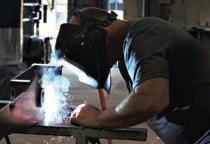
Some teams are mixed with New Zealanders, and some are
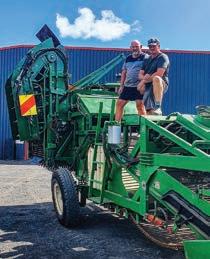
CALL (09) 236 8175 WORKSHOP IN
WWW.THOROUGHBREDNZ.CO.NZ PROVEN
&
TUAKAU
TRACK RECORD, ENGINEERING, MODIFICATIONS
FABRICATION
RSE workers and backpackers representing 16 nations add an international flavour to the COFL this season. Photo by Tim Shoultz Photography
The ORCHARDIST : MAY 2023 17 YOUR INDUSTRY
Employers are now recognising that sport contributes to happiness, wellbeing and connection to home
strong enough to stand alone, representing their own nation, such as several groups of English lads in Queenstown.
Next season Shane says they will also be fielding a Nepalese team, and down in Roxburgh, they might be able to host its second one, with the competition now strong enough to be divided into two leagues. The Teviot Bradas is sponsored by CAJ Apples and are all Ni-Vans.
Shane coaches the Premier Cromwell team and another Summerfruit New Zealand grower Martin Milne coaches the Division Two team, both assisted by Ferg Dardis (Irish) and Adam Smith (English).
Together the two Cromwell teams represent 16 different nations, and at least 15 to 20 percent don’t even speak English.
In fact, this year’s goalie is a French New Caledonian, Jean Pierre, or JP as he is known on the field, who has never played football in his life, but with the help of translators in the team, the messages all get through thanks to strong teamwork both on and off the field.
“Perceptions have changed right around, and employers are now recognising that sport contributes to happiness, wellbeing and connection to home,” Shane says.
Major cherry grower 45South sponsored the Cromwell teams with a sizeable donation this season, because some of the players were struggling with registration fees and sports gear, and the money will also be used for new goals.
“We’re trying to make sure that the guys can be integrated into the local community, and providing extracurricular activities outside of work,” chief executive Tim Jones says. Esteban Morales, from Chile, has worked for Cherri Global
near Bendigo for the past six years, and played football in Cromwell for three. Before that he spent lockdown in Roxburgh, but headed north soon after to find some more younger people to socialise with.
He says football is his family now and his employer is also very supportive of him playing sport.
“It’s very solid what we have here.”
Vanuatuan Robin Tapawa is in his fourth season playing football and works for Shamrock Ltd, and is contracted to Rockburn Wines, that is also very good at letting him have Saturdays off when he has to travel to games in Queenstown.
“It makes me feel at home playing with them, and it’s helped my health too.”
Shane says some of the RSE workers now want to live here with their families permanently.
Cromwell coaching staff love to see the interaction and the improvements in football skills, social skills and families coming along to support them on the sidelines.
“We have this great multicultural diversity, and we do it on our own,” he says of the COFL, which is completely independent.
In February, local government organisations around the district got involved and organised a Multicultural Football Festival in Wānaka, through the Queenstown Lakes District Council (QLDC) Welcoming Communities programme.
This was also a brilliant example of a sporting festival celebrating the diversity of the district, and a great opportunity to bring people from many backgrounds together.
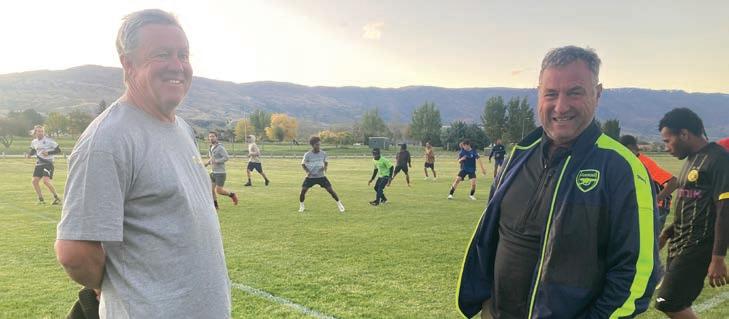 Coach and orchardist Martin Milne with Radio Central Football League owner and coach Shane Norton.
Photo by Aimee Wilson
Coach and orchardist Martin Milne with Radio Central Football League owner and coach Shane Norton.
Photo by Aimee Wilson
18 The ORCHARDIST : MAY 2023 YOUR INDUSTRY
We’re trying to make sure that the guys can be integrated into the local community
Tuatara Structures are leaders in the design and construction of structural steel buildings, across New Zealand.
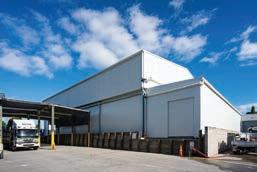

Specialising in large-scale industrial, commercial, and agrispace solutions, our team will take the time to understand your business goals and challenges, ensuring we provide a build solution that fits
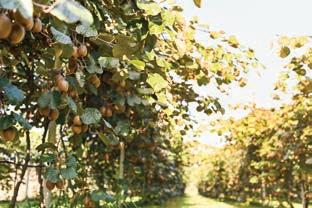


With fixed-price contracts, free feasibilit y studies and turn-key design-build outcomes, our experienced team has the capability and mettle to deliver outstanding results every time
Call us today to see how we can help you achieve your business goals.
Three women are finalists in Māori grower award
Three women are the finalists in the 2023 Ahuwhenua Young Māori Grower Award, which is for employees of levy paying growers. The winner will be announced in Tauranga on 9 June. ELAINE FISHER found out about their goals, development and whānau.
Alix Te Kere joined Rockit Management Services five years ago and her previous roles included senior leading hand, health and safety representative, and welfare officer in the Havelock sector.
The mother of three young boys is grateful for the support of her employer, and her partner, which enables her to do the school run and to attend her kids’ sports. Having time to enjoy being with her whānau is what she loves.
Alix has achieved Level 4 in Fruit Production and plans to continue on to the Level 5 qualification. She has also completed a hazard and risk identification course and intends to expand her knowledge in health and safety.
Erica Henare first worked for Kono NZ as a casual thinner during a summer break, and that’s when she fell in love with the job and the environment. Outside of work Erica enjoys spending quality time with her whānau including her three sons, aged nine, eight, and seven. Juggling family and work is made easier by the fact that Kono NZ has a strong focus on putting whānau first and supports the needs of parents. “If I need to work from home or go home early I can. My boys’ dad is also very supportive, and we have a great coparenting relationship.”
Helping her team set personal and professional goals as part of their development is something Erica particularly enjoys. She has built her people skills to develop a great rapport with colleagues both older and more experienced in the industry, and this has assisted her to progress quickly in her career.
Grace Rehu worked night shifts at Turners & Growers East site packhouse while at college, and after finishing school, became a quality controller. She spent some time in the development team planting and redeveloping blocks, and then was offered a permanent position.
Part of a team of 15 permanent staff employed to work on 100 hectares of apple orchards, Grace supervises a Samoan team of eleven Recognised Seasonal
Employer (RSE) workers for the harvest season, as well as undertaking crop spraying, pruning and all tasks involved with fruit production.
Being part of the T&G Emerging Leaders programme has had a huge impact on her personal and professional development and also helped give Grace confidence to enter the awards.
Cyclone Gabrielle caused widespread destruction in the North Island, including the orchards Alix and Grace work on.
Aaron Hunt, representing Te Tumu Paeroa and the judging panel
Alix says whānau was at the heart of Rockit’s response to Cyclone Gabrielle. “The priority was on people, and ensuring our staff and their families were safe,” says Alix, whose own home was unscathed by the storm.
“While Rockit did lose some crops, well over half of our orchards were fully operational, with another quarter able to be partially harvested. With a concerted effort we were able to get apples off the trees and packed ready for export by Rockit. We got through it all by working together.”
Grace’s home was also unaffected by the cyclone, but many of the orchards she works on were damaged. It was hard to see the destruction of homes and livelihoods.
“The Turners & Growers team all came together as a whānau to help each other get through and to clean up. It’s slowly getting better, and we have been harvesting what we can from above the ‘tide line’ where water came up to in the orchards.”
“For young Māori, the horticulture industry remains a great career option”
YOUNG GROW ERS 20 The ORCHARDIST : MAY 2023 YOUR INDUSTRY
ALIX TE KERE (30)
• Ngāti Kuhungunu, Ngāti Tu, Ngāti Maru, Ngāti Maniapoto,
• Health and safety advisor, Rockit Management Services, Hastings
• ITO Level 4 in Fruit Production


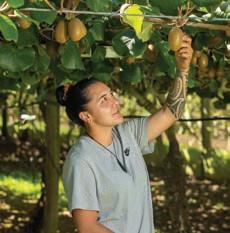
ERICA HENARE (27)
• Ngāti Kahungunu, Ngāti Maniapoto
• Pipfruit and kiwifruit manager, Kono NZ LP, Motueka


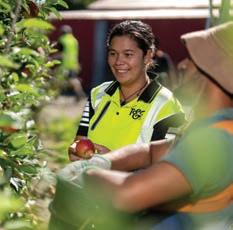
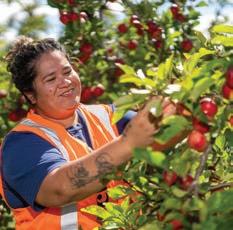
• ITO Level 3 in Horticulture
GRACE REHU (21)
• Rangitāne, Taranaki
• Leading hand Turners & Growers, Puketapu, Hawke’s Bay

• Turners & Growers Emerging Leaders programme
“I have an amazing connection with all the staff in the field, helped by my strong background as an orchard hand and just by being that person people can rely on –that’s what makes my job fun and exciting.”
“Kono is an amazing company. They look after us really well which holds everybody here. Through work we build relationships with people from different walks of life, respecting each other and getting along really well. Everything functions well here.”
ThermoMax

“Turners & Growers’ vision is to “grow healthier futures through fresh produce” and I want to execute that vision every day. If I can do it, so can our future wāhine and tāne.”
Frost Protection
• Provides internal warming more compact flowering

• For use on fruit tree crops
• The “spray on” that adds to all other methods
• Good results have been achieved when applied through irrigation lines
0800 735 859 www.bdmax.co.nz See the website for HortResearch report 10264 & 9 years of grower experience. Available from Farmlands & Horticentre.
results
Excellent
to -2°C
The ORCHARDIST : MAY 2023 21 YOUR INDUSTRY
Banking on an avocado bounty
Swapping well-established careers in banking to take up horticulture for the first time might seem daunting, but for Maria and Andrew Watchorn going out on a limb and buying an avocado orchard was the right decision.
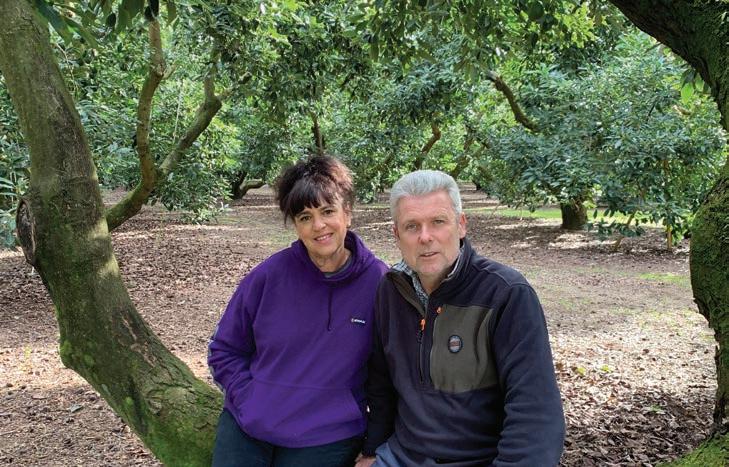
HELENA O’NEILL talks with Maria about finding independence with avocados.
Maria and Andrew purchased their first fivehectare avocado orchard at Ōmokoroa, Bay of Plenty, in 2005 after 18 years and 30 years respectively in banking. Although it was predominantly a citrus orchard, there were some avocado trees amongst the citrus and the couple decided to embrace avocados instead.
Eleven years later they bought an additional 10-ha production block. They further expanded
in 2021 with another 7ha, and last year relocated to a young 3ha block near Katikati.
Maria, while she knew nothing about avocados, spent a lot of time in the garden with her father growing up in Whakatāne.
“I come from an Italian family with expansive gardens and spent a lot of time learning – purely from osmosis I’d suggest –about what to do in the garden. Why my father was pruning a fig tree the way he was, and he
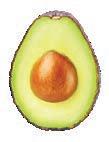
FEATURE ARTICLE 22 The ORCHARDIST : MAY 2023 YOUR INDUSTRY
Maria and Andrew Watchorn at their top-performing avocado orchard in Katikati
always made sure all the fruit was accessible. Everything he taught me is basically how we look after avocados.
“One of the things we say here is that we let science guide us, but we let nature and nurture do the rest. Your orchard tells you what it needs as well.”
The couple has embraced innovation from the beginning, drilling a bore for water on their first block back in 2006 so they could irrigate with overhead sprinklers. More importantly, this allowed them to frost-protect their trees, which had not been done for avocados. The Watchorns credit their frost system for saving their crops many times. From early on the couple has consistently and regularly pruned trees for light, picking access, spray penetration and growth promotion.
“We’ve always worked incredibly hard to turn an orchard around to what we believe will produce the best crops. Even the newer blocks that we’ve bought have always been decent-sized projects. Some are one-to-two-year projects and some are more than that. We’ve even purchased this time around, a newly-planted block, so that’s going to be interesting for us. Every block that we have ever bought has taken a massive amount of pruning, structural pruning, and a lot of work to get it where we want it to be.
Listen to everyone’s opinions and then use what you believe to be the right thing
“We’re suckers for punishment really, we’re supposed to be reducing our workload, not increasing it.”
After 18 years of working with avocados, Maria says the biggest lesson she has learned is to take in as much information as you can before making your own decisions.
“To read, to listen, to be very open-minded to any information that you can get. Listen to everyone’s opinions and then use what you believe to be the right thing. I don’t think that anyone is ever wrong, you have to be openminded and use what works. At the end of the day, the only thing that makes the difference is a practice that has results. Once you’ve found that, it’s hard to go back.”
They must be doing something right, having been named New Zealand’s top avocado grower six years in a row from 2016 to 2021.
In April Maria and Andrew hosted a field day on their orchard as part of the 10th World Avocado Congress. The Watchorns are no strangers to hosting field days, showing delegates around their second 10-ha orchard at Katikati as part of the 2018 NZ Avocado Conference. Along with other field days, one of the highlights was hosting the then-Governor General Sir Jerry Mateparae on a private tour of their orchard during his visit to showcase Bay of Plenty horticulture.
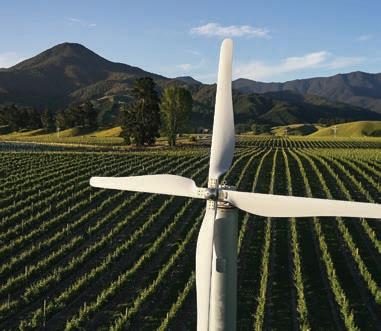
Dan Gardner M +64 27 533 3343 | P +64 6 879 8312 E info@nzfrostfans.com or visit nzfrostfans.com Take the guesswork out of fighting frost with our FrostBoss® advanced wind solution. • Designed by an ex-America’s Cup Research Engineer • Blows warmer air across the crop to stop frost settling • Low noise, no ’chop-chop’ sound • Excellent coverage • Fuel efficient • Auto start and stop to preset temperatures • Compatible with FrostSmart® real-time monitoring • Ongoing support The quiet frost fan. Stops frost damage.
The ORCHARDIST : MAY 2023 23 YOUR INDUSTRY
Hosting a field day as part of the World Avocado Congress was a step up, but Maria is proud of the work they have done on their orchard. She says the whole team worked really hard to present an orchard they were all very proud of.

“It was a little bit nerve-wracking, but we’ve had nothing but really good, positive feedback. I felt really proud, we all felt really proud. I think we represented New Zealand and what we do really well.”
They also talked about New Zealand native plants, as the Watchorns have put a lot of effort into restoring natives around their property, which is an important part of their sustainability plan.
We let science guide us, but we let nature and nurture do the rest
As for the congress itself, Maria says she came away from the conference feeling encouraged and inspired by those she met and by the information shared there.
“The ability of 33 countries to come together to share research and knowledge at one venue, and to feel like we were all collaborating towards the same thing. As a world group, we’re all aware that one of our main aims has to be building the consumption of avocados.
“It was just incredible, well worth every cent. The people were lovely too. Coming from having a couple of quite downer years for avocados … there’s work to be done but I think you come away feeling a bit better about it all.”
EMBRACING INNOVATION
Drilled a bore for water on their first block back in 2006 so they could irrigate with overhead sprinklers
Frost-protected their trees, a first for avocados
Consistently and regularly pruned trees for light, picking access, spray penetration and growth promotion
TOP GROWERS
Maria and Andrew Watchorn have been named New Zealand’s top avocado grower six years in a row from 2016 to 2021
Field day visitors from the 10th World Avocado Congress
24 The ORCHARDIST : MAY 2023 YOUR INDUSTRY
3
Send us your nominations for the 202 Horticulture Industry Awards

HortNZ is calling for nominations for its 2023 Awards to be presented at the Horticulture Conference Gala Dinner. HortNZ will present up to one award in each of the following categories each year.

BLEDISLOE CUP
Awarded for an outstanding and meritorious contribution to the New Zealand horticulture industry.
PRESIDENT’S TROPHY
To celebrate and develop inspiring leadership within the horticulture industry.
INDUSTRY SERVICE AWARD
To recognise people with long and dedicated service in a supplier or service role (not a grower) that have worked beyond the call of duty for the betterment of the horticulture industry.
ENVIRONMENTAL AWARD
To recognise a person, or organisation, that has developed and implemented a sustainable environmental project, with identifiable benefits.
HORTNZ LIFE MEMBER
To recognise growers with long and dedicated service as office holders of H ortNZ and/or an affiliated Product Group or affiliated Grower Association.
Full criteria for the above awards are available on the Horticulture New Zealand website or can be requested from the Board Secretary.
Who can make nominations?
• Any grower member of HortNZ, an affiliated Product Group or an affiliated Grower Association can make nominations.
How do I nominate someone?
•Complete a nomination form. These are available on our website www.hortnz.co.nz or can be requested from the HortNZ Board Secretary via email admin@hortnz.co.nz or by phone 0508 467 869
When will the awards be presented?
•At the 2023 Horticulture Conference Gala Dinner on Wednesday 2 August 2023 at Te Pae Christchurch Convention Centre
When do nominations close?
•Nominations must be sent to the HortNZ Board Secretary, via email admin@hortnz.co.nz or PO Box 10232, Wellington 6140 and must be received by 5.00pm on Tuesday, 6 June 2023.
Send
us your nominations now!
INDUSTRY
Starting out with a Kiwi icon – feijoas
Peake Produce is a good example of the growing popularity of the Waikato when it comes to horticultural production.
Geoff Lewis
Photographs : Trefor Ward
About 30 years ago Heather and Bryce Diprose bought a 7.9ha block of flat land on Peake Road near Cambridge. A few years ago the couple decided they liked the idea of growing feijoas and planted 2400 trees on the five or six hectares of available space.

After some research they decided
to espalier the trees – training them along wires from strainer posts at each end of rows 2.5 m apart, rather than the traditional method of growing them as individual bushes. Pollinated by birds, the open espalier structure can reduce yield but can also provide larger and better quality fruit and earlier cropping. It also
survives better in adverse weather, Heather explains.
‘’Feijoas are quite shallow rooted, but as our trees are tied back to wires we didn’t have any damage from the high winds that arrived with Cyclone Gabrielle.’’
Peake Produce is in its early stages and the yield is expected to increase
26 The ORCHARDIST : MAY 2023 YOUR
Heather Diprose (second from left) with daughter Rachel, Rachel’s partner Jeremy McColl and their children
significantly in the next few years, Heather says. ‘’We learned a lot in the first year where we threw away a lot of fruit we shouldn’t have.’’
Now in their fourth season, they have so far harvested 7.8 tonnes or 600 crates – this is up from 290 crates in the first year. Production is expected to double year-onyear through to about year seven. The product goes to market through T&G which sells to the supermarkets on their behalf. Bryce and Heather have noticed a growing demand for locally-grown fruit.
Orchard Crawler
Boom
• Self levelling tracked boom 12m height, Lithium/Briggs

$83,000 + GST ex Penrose
‘’The trend is to go-local. T&G have told us they are keen to get supply from local growers, which seems to make sense as there is no point in trucking produce all over the country.’’
Next year Peake Produce plans to sticker its produce so its fruit can be recognised in the marketplace.
Feijoas were first collected in Brazil in the 1890s and are named after Portuguese naturalist João da Silva Feijó. They arrived in New Zealand in the 1920s. They seem to be a ‘love ‘em or hate ‘em’ fruit, and the Disprose family continue to be amazed at how little visiting friends
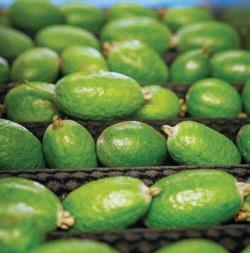
Orchard Crawler Scissor
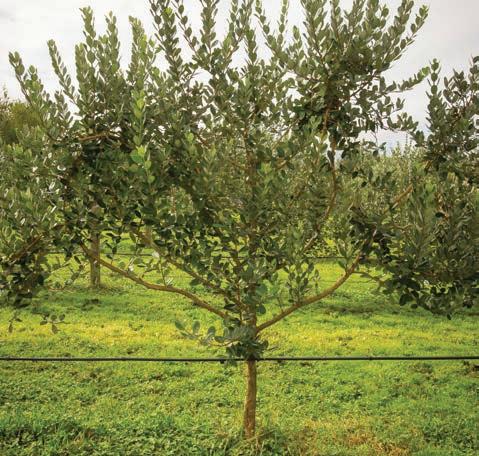
• Tracked scissor lift, 8m height Zero turn, can climb to 40% $26,200 + GST ex Penrose



Email: sales@landex.co.nz

Ph: 0226 188 456

The ORCHARDIST : MAY 2023 27 YOUR INDUSTRY
and travellers from overseas know about feijoas.

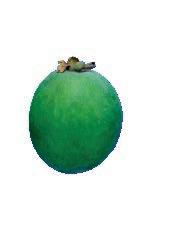
‘’Feijoas are almost a Kiwi icon. We’ve had people from overseas visit. People from places like the United Kingdom and Hong Kong where they usually don’t see feijoas. We had an Australian couple visit – they’d just seen our sign and come in off the road,” Heather says.
T&G have told us they are keen to get supply from local growers
‘’So many people say they don’t like feijoas, but it is usually because they eat them at the wrong time. Some people like sweeter fruit, while others like them more tart.’’
All the feijoas at Peake Produce are hand-picked and the pickers are specially trained to recognise the texture of the fruit when it is best to pick. This means rows may be pickedover multiple times.
The control of insect pests and fungal diseases is an ongoing challenge. Guava moth arrived from Australia in 1997 and devastated feijoa crops in Northland. This was followed by the anthracnose fungal infection which finished off most of anything left.
Currently pheromone traps are in use, and research is being done into disrupting the mating of the guava moth. But good orchard hygiene is a starting point to prevent the spread of pests and diseases.
Immediately after fruiting, the orchard is hand-pruned to retain the shape of the espaliered trees. Clippings, thrown out by the orchard mower, along with leaf-fall from the alder
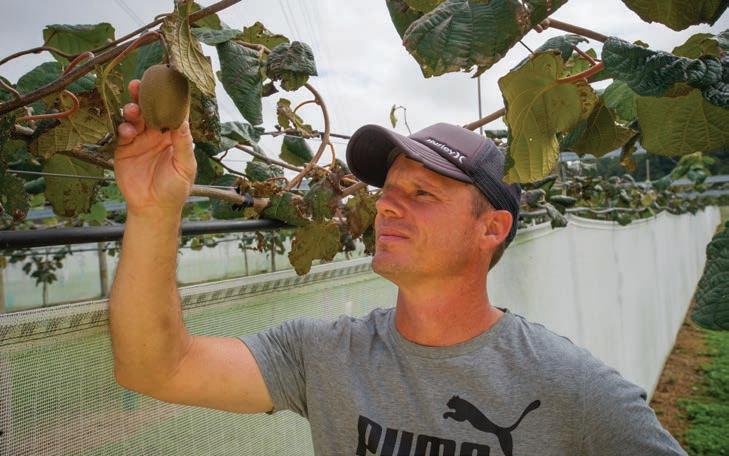 To diversify the business, half of the 2400 feijoas trees were hauled out in favour of green Hayward kiwifruit
To diversify the business, half of the 2400 feijoas trees were hauled out in favour of green Hayward kiwifruit
28 The ORCHARDIST : MAY 2023 YOUR INDUSTRY
Anatoki feijoas
trees used as shelter belts, helps to provide nitrogen into the soil and reduces the potential breeding grounds for moth. Soil samples are taken in winter which are analysed by Hill Laboratories and the results tell the growers if the orchard requires additional nutrients.
packhouse added and fitted with the equipment needed to sort and pack fruit. To prolong shelf-life the produce is kept at 4 degrees Celsius which helps it last longer – if it is not immediately sent to T&G.

Peake Produce cultivates three varieties of feijoa – Kākāriki, Anatoki and ArhartTM – which are relatively new varieties. This helps cropping to be spread over a wider part of the season, catch the better-paying early and later periods, and avoid the flood of mid-season backyard fruit.

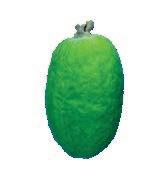
Heather is NZGAP (Good Agricultural Practice) certificated and is assessed every three years. This allows her to sell into any market in New Zealand.
Five years ago the barn on the property was renovated and a

So far the biggest feijoa they have grown has weighed in at 368 grams. The aim is to get to 425 grams which would be a record, Heather says.
Meanwhile, as the family lives on the property and as a hobby and an interest, Heather and her daughter Rachel have worked out what they can make with feijoas – preserves,
© Copyright 2021 Farmgard Ltd. All rights reserved. Specifications are subject to change without prior notice. CONTACT US NOW TO FIND OUT MORE. Berti offers the best mulcher for the finest mulch. They have double internal counter combs which reduce prunings to a very fine mulch. The finer the mulch, the less chance of disease. AN ALL ROUND FINE MULCHER. Get the finest mulch with the Berti orchard mulcher. CALL FARMGARD 24 HOURS 0 800 FARMGARD FIND OUT MORE AT farmgard.co.nz Nationwide Dealer Service Network 35 years, Generations of Experience
Kākāriki feijoas
Many people say they don’t like feijoas, but it is usually because they eat them at the wrong time
The ORCHARDIST : MAY 2023 29 YOUR INDUSTRY
feijoa-flavoured ice cream, sorbet and dried feijoa chips which are popular with the kids.
Two years ago they made a decision to diversify, and about half of the 2400 feijoas trees originally planted were hauled out in favour of green Hayward kiwifruit, with gold kiwifruit a future prospect.
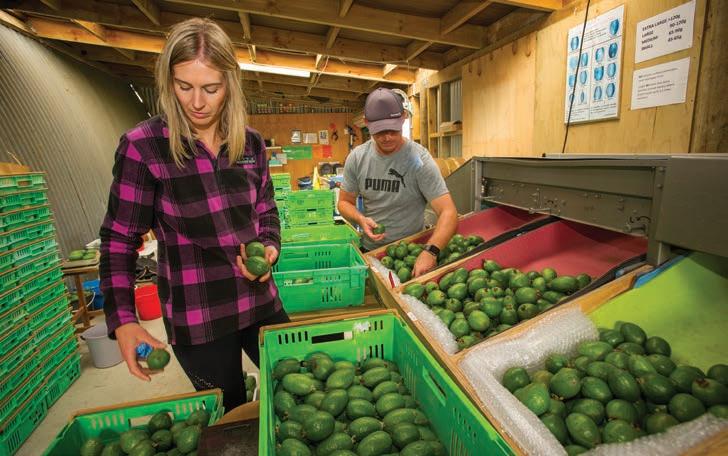
The one thing we have learned is not to put all our eggs in one basket
This left about 1100 feijoa trees in the ground, with the remainder of the area for hay and silage. This is a project for Rachel and her fiancé, athletics coach Jeremy McColl.
‘’The one thing we have learned is not to put all our eggs in one basket.’’ Heather says.
Peake Produce is now in their fourth season
The biggest feijoa they have grown so far has weighed in at 368 grams
They cultivate three varieties of feijoa –Kākāriki, Anatoki and ArhartTM
7.8 tonnes or 600 crates harvested so far this season
Peake Produce invested in a packhouse on the property
30 The ORCHARDIST : MAY 2023 YOUR INDUSTRY
Toi Ohomai | Te Pūkenga
Alex Croasdale-Saunders has turned an interest in gardening into a career.
Alex studied the Fruit Production programmes at Toi Ohomai Institute of Technology and is now mentoring a current employee through his horticulture studies. Alex manages Pahoia Orchards and encouraged his 2IC (second-in-command), Darryan Andrews, to also study at Toi Ohomai.
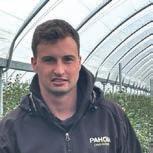
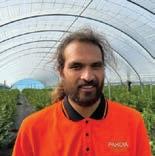
“The support from my tutors has been exceptional. Harmine and James have a very whānau mindset when it comes to our class, which I think is awesome,” Darryan says.
Enrol in a course in fruit
production
Designed for those working in the horticulture industry and looking to upskill on-the-job.
NZ Certificate in Horticulture Production (Level 4) Strand in Fruit Production Starts 6 June (Tauranga)

NZ Certificate in Horticulture (Level 3) Strand in Fruit Production Starts 19 June (Ōpōtiki), 26 June (Tauranga)
Fruit Production for Profit Starts 3 July (Tauranga)
Contact the team to find out more and apply.
0800 86 46 46
toiohomai.ac.nz

ADVERTORIAL
The ORCHARDIST : MAY 2023 31
Cromwell orchard branching out
Some Central Otago growers have moved away from apples and pears, choosing to concentrate on stonefruit instead. This has been happening for years. But there are still plenty of apple growers going strong, and heritage fruit is making a comeback. Pipfruit is in abundance this season, after a long hot summer with adequate rainfall.
AIMEE WILSON talks to the team at Jackson Orchards about their season.
Jackson Orchards in Cromwell is having an excellent pipfruit season because it has been a long summer in the south, “it has been dry, and when we have had rain it has been in the evening, and when it’s cold,” owner Kevin Jackson says.
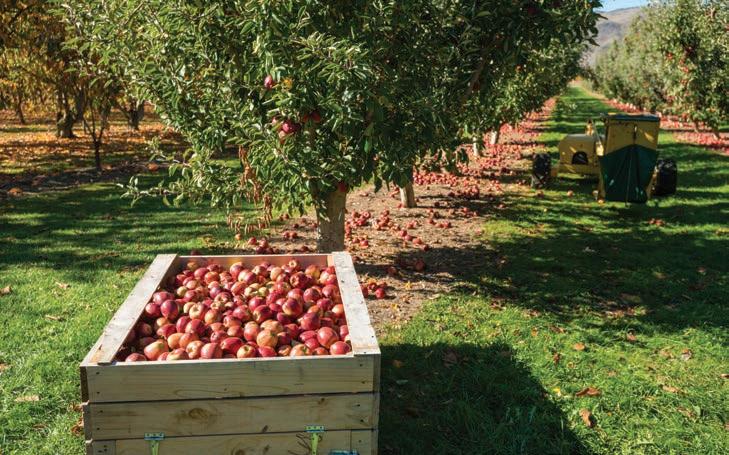
One of New Zealand’s biggest names in fruit growing, the orchards supply 100
different varieties of stonefruit and pipfruit to the domestic market.
Labour has been steady with a mixture of locals, backpackers and those early retired. Being situated right on the main highway towards Wānaka, the orchard is visible to camper vans.
This season has been even more special with
FEATURE ARTICLE 32 The ORCHARDIST : MAY 2023 YOUR INDUSTRY
the completion of its new packhouse – an extension to the existing building, starting with the removal of apricot trees.
The new packhouse is twice the size of the original one but on the same footprint, with more room now for packaging and preparing pallets.
The manufacturer of the original beams within the internal structure was no longer in business, but they managed to find a new supplier in Levin who did a great job of matching them.

“It was just a little bit of luck that we were able to have them,” Kevin says.
Now at the tail end of the season, there are currently eight varieties of apple and six varieties of pear all being sorted and packed in the new facility, and the mail order team have been busy sending fruit all over New Zealand.
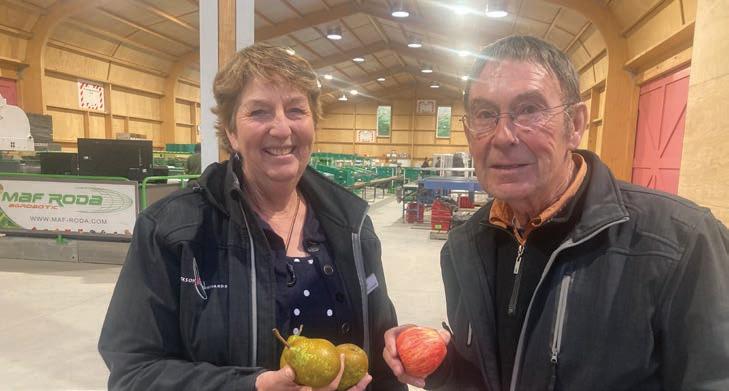
When Kevin was forced to move his orchard out of the Cromwell Gorge and re-establish on the state highway north in 1989, he extended his growing season from just six short weeks of apricots and cherries, to a variety of stonefruit and pipfruit for a full six months of the year.
As the years rolled on, the population boomed and the visitors kept coming, his elaborate fruit stall, guided orchard tours and range of onsite accommodation have turned his 40ha orchard operation into a lucrative tourist venture as well.
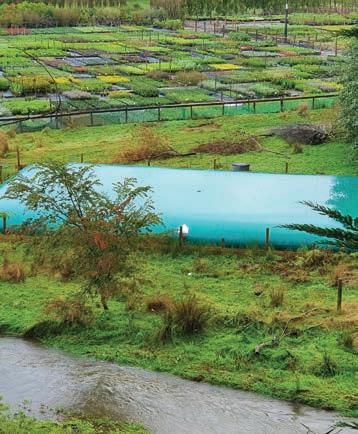 Owner Kevin Jackson and office manager Jill Mansell in front of the new packhouse in Cromwell.
Photo by Aimee Wilson
Owner Kevin Jackson and office manager Jill Mansell in front of the new packhouse in Cromwell.
Photo by Aimee Wilson
www.precisede.co.nz Angus Clarke 027 498 3146 Allan Crouch 021 909 463 The ORCHARDIST : MAY 2023 33 YOUR INDUSTRY
And that suits Kevin’s personality perfectly. He once almost bought the Shotover Jet in Queenstown and is involved in a number of other commercial ventures, but when his children were growing up they loved the orchard, so he stayed put.
Kevin has always liked to ensure that the public can see the workers
The business now has three electric tour buses that are used to ferry curious visitors around the orchard to learn about fruit growing, they fit 14 in each, and until recently had been turning people away as there was too much demand.
“It was in my blood from a young age to get involved in tourism,” he says, as we engage in a
personal tour around the orchard in one of his famous Mini Mokes (a half Mini but with an open frame roofed passenger area).
Since the introduction of an established roadside stall and the addition of fresh vegetables, preserves, condiments and gifts in an elaborate supermarket-style display, Kevin believes his orchard has really come to life.
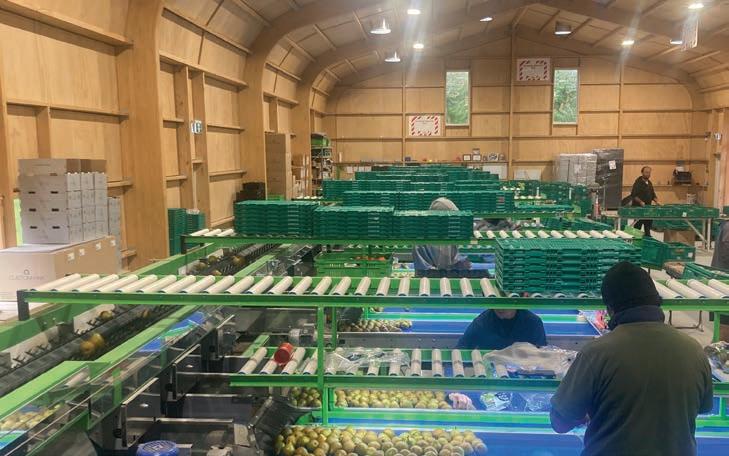
“The fruit stall has been very successful and we believe it has been because it’s part of the packhouse.”
“Kevin has always liked to ensure that the public can see the workers,” office manager Jill Mansell says. She knows him well having worked here 22 years.
Visitors can literally pull off the main highway and walk straight into a working orchard – people packing the fruit, and at Christmas all of the cherries coming down the grader.
34 The ORCHARDIST : MAY 2023 YOUR INDUSTRY
The new packhouse is an extension of the existing building. Photo by Aimee Wilson
The company employs 15 permanent staff and peaks at 70 over summer. Pipfruit makes up 15 percent of the business.




They also grow cherries, peaches, apricots, nectarines, plums, greengages, pears and walnuts.
Kevin says heritage fruit such as the Granny Smith apple are popular, and years ago when growers were pulling them out, his brother Melvyn told him to stick with them. “They are the easiest to grow, are crop heavy and pretty much pest and disease-free,” Kevin says.
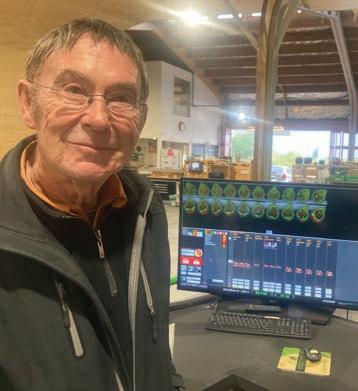
They also don’t need to be thinned like other varieties of apple.

Up until three years ago Jackson Orchards still exported its apricots, but they don’t need to anymore, because of its strong relationship within the New Zealand market.
“They sell so easily here and since we’ve stopped exporting, it has lifted our game because the good ones are staying here,” he says.
In the past 12 months Foodstuffs has started buying their fruit under the Pams label to sell direct into supermarkets.
The ORCHARDIST : MAY 2023 35 YOUR INDUSTRY
Kevin Jackson’s new packhouse can be seen right from the front of the fruit stall. Photo by Aimee Wilson
There is one apple variety that Jackson Orchards prides itself on growing, and that’s the Honeycrisp, under a restricted license, of which there are not many.

Since we’ve stopped exporting, it has lifted our game because the good [apricots] are staying here
They appeal to the older generation because they are a soft apple but still crisp in a sense, Kevin says, “and the easiest to eat.”
Kevin believes Central Otago grows the best fruit, “because of the flavour from the low humidity and low rainfall. Soil types have a bit to do with it, but it’s mostly climatic conditions,” he says.
Using the revolutionary Tatura trellis system, this method of intensively planting stonefruit and pipfruit trees, developed by Australian researchers in the 1980s, requires trellis and wires on which the trees are trained into a sharp V.
At Jackson Orchards, it’s also the family environment
Jackson Orchards’ biggest selling apple – the Granny Smith. Photo by Aimee Wilson
JACKSON ORCHARDS GROWS cherries apples peaches
apricots nectarines plums
36 The ORCHARDIST : MAY 2023 YOUR INDUSTRY
greengages pears walnuts
that plays a big part in its success. Kevin has a strong relationship with all of his staff, and many of them have come from orchards growing up as well.
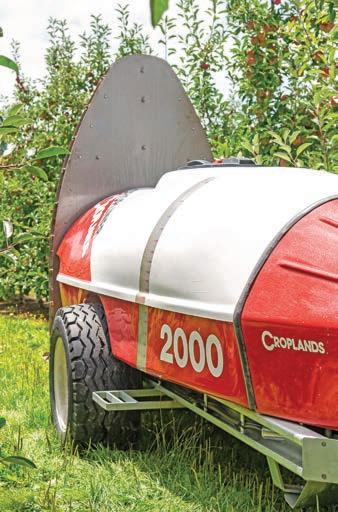

Jill (née Hanning), once lived in nearby Earnscleugh with orcharding parents, while new operations manager Tania Avis’ grandparents were also local fruit growers.
Morning tea is an integral part of the day where the owner and managers sit down with staff to connect and find out how everyone is going.
“Kevin is always walking around talking to staff and keeping them interested,” Jill says.
With heritage fruits such as greengages, Granny Smith and Royal Gala apples making a strong comeback, and people getting into preserving in a big way, the fruit growing cycle continues both through the seasons and now also into our way of life.

“It’s about taking what’s in season and making it last,” Jill says.
Jackson Orchards has been built to last too. Who knows what 81-year-old Kevin will dream up next.
CROPLINER SLIMLINE Shaped for minimum crop interference 920MM LINEAR TOWER High accuracy in narrow plantings Freecall 0800 106 898 | Email sales@croplands.co.nz | croplands.co.nz Take your operation to the next level with a new orchard sprayer from Croplands. Contact your local Croplands or Fruitfed Supplies rep to find out more. HIGH PERFORMANCE FANS FOR HIGH-PERFORMING GROWERS. BRING OUT
BEST IN THE BLAST
THE
John Scott, a former orchardist himself, has worked at Jackson Orchards for years. Photo by Aimee Wilson
The ORCHARDIST : MAY 2023 37 YOUR INDUSTRY
Women don’t want quotas – just the same ‘starting blocks’
Women want the same opportunities as men, but they need to be on the same starting block in order to make the most of the opportunity, says Yvette Jones, author of the Kellogg Rural Leadership Programme report: “Where are our women? A health check of female representation in the Kiwifruit workforce”.
Elaine Fisher
Among the findings of her research is that women do not want ‘quotas’. They want to gain positions based on their merits, but unconscious bias appears to be stopping that happening.
“This is where equity and equality come into play. Retraining for bias allows people to discuss opinions and views in safe spaces,” says Yvette who is business manager with Plant & Food Research in the Bay of Plenty.
Yvette is part of the Women in Kiwifruit group which has a goal of inspiring, connecting and elevating women in the kiwifruit Industry.
Her report was conducted to understand the current status of the representation of women in the kiwifruit industry. It aimed to find out if women are well represented across the kiwifruit workforce through completing a ‘health check’. It includes personal interviews and a literature review identifying documented benefits and barriers for women in the workplace, diversity and business culture. “A diverse workforce is not a ‘nice to have’, it is a morally, ethically, socially and financially beneficial business decision. Women contribute to increased levels of innovation, and better risk management,” Yvette says.

38 The ORCHARDIST : MAY 2023 YOUR INDUSTRY
Women in Kiwifruit International Women’s Day speakers from left: Laura Shultz (Trevelyan’s Pack and Cool), Stacey Michelsen (former Captain of The Vantage Black Sticks), Kiriwaitingi Rei (head of Māori alliances at Zespri) and Yvette Jones (Plant & Food Research)
Her research shows that women figure prominently in the kiwifruit workforce with administration, finance, human resources, quality, laboratory and inventory roles dominated by women. Business support, coolstore, grower services, orchard and forklift positions are dominated by men. The departments having the most balanced male to female ratio are operations and packhouse workers. Women make up greater than 60 percent of supervisor

Online Spray Diary



roles, with diminishing representation in management roles (between 50 and 60 percent). Women make up less than 30 percent of senior leadership positions.
Yvette says addressing gender imbalance also involves making sure men are present across all roles as well. Her research showed that as roles progress in seniority and require a higher degree of leadership, fewer women are seen. In order to address this, the industry needs more data.
 The audience at the Women in Kiwifruit International Women’s Day celebration in Tauranga at which Yvette Jones presented her Kellogg report
The audience at the Women in Kiwifruit International Women’s Day celebration in Tauranga at which Yvette Jones presented her Kellogg report
One digital diary for all agrichemical applications Auto-calculation of rates, nutrients, withholding periods Chemical and stock inventory management Compliance-ready reproducible reports Mobile-friendly for use on any device with a data connection Enter information once, use it everywhere Data security with cloud storage Integration with ABCgrower labour management software Simple efficient record keeping www abcsoftware co nz +64 6 845 0068 hello@abcsoftware.co.nz FREE 45-DAY NO-OBLIGATION TRIAL Scan to learn more Information automation made easy Spray Dry application Fertigation Consumables inventory management The ORCHARDIST : MAY 2023 39 YOUR INDUSTRY
“You can only manage what you can measure. I think a great start is for entities to collect data on gender as well as other diversity metrics to understand how they are performing.
“For some people it might be quite confronting to see a lack of women in senior positions across their business, or to look at a picture of their board or senior leadership team and see everyone looking the same.
It’s made employers consider what else they can offer workers beyond wages
“But what a great starting point to influence change. Some of my recommendations to do this include looking at business culture and introducing unconscious bias training for middle and senior managers.”
Yvette also found that women can limit their own progression through unconscious bias and belief they are not ‘good enough’.
“Unconscious bias has so much to do with your upbringing, culture and values. This makes it hard to change or influence someone’s unconscious bias. What we can do is give employees resources or training to identify their own unconscious bias. Then they might be able to self-regulate that.
“How agriculture and horticulture in schools is taught is important, as we want young people to connect with
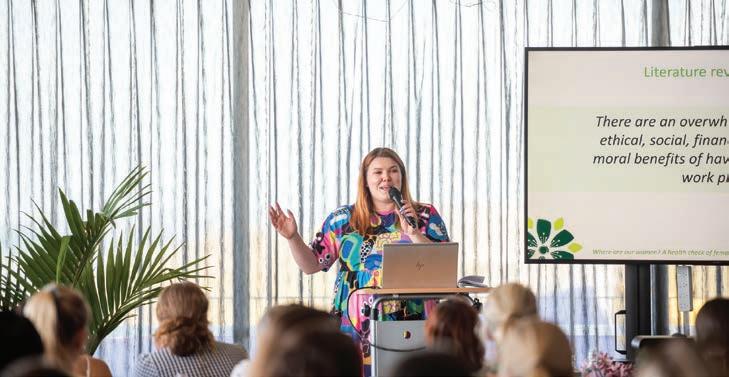
horticulture and where their food comes from. If we don’t use a wide range of people in our imagery, marketing or educational material then a young person could be influenced to feel like an imposter.”
When women are in leadership positions, they bring other women with them, Yvette says.
“They tap more shoulders, they become mentors for other women, they create pipelines of more female leaders climbing the ladder. I think our industry thrives when we are innovative, and what is more innovative than a diverse group of people around a table?”
Labour shortages triggered by Covid-19 have, in some cases, made the kiwifruit industry more attractive for women.
It might be quite confronting to see a lack of women in senior positions
“Many people I talked to who have been in the industry a while remember when school hour shifts or twilight shifts were more common across postharvest or picking. It was great to see many entities bringing these back to reach a new demographic of people who may not have considered kiwifruit industry work in the first place.
“It’s made employers consider what else they can offer workers beyond wages. If a range of employers are offering comparable wages, what makes your business stand out? If people can offer a positive encouraging business culture,
Yvette Jones presented her Kellogg report at the Women in Kiwifruit International Women’s Day celebration in Tauranga
40 The ORCHARDIST : MAY 2023 YOUR INDUSTRY
What is more innovative than a diverse group of people around a table?
an opportunity to have a mentor, personal development and fair promotional opportunities, they stand out as an employer of choice.”
In March Yvette presented the findings of her Kellogg report at the Women in Kiwifruit International Women’s Day celebration.
“I hope the Women in Kiwifruit group can use this research to achieve external funding to continue to galvanise women in the industry. We also hope employers will encourage their teams to get more involved in groups like ours.”
To keep up to date with Women in Horticulture, its news and activities, and join the membership database, email info@women-in-hort.nz
Everyone is welcome.
Read the report
The Kellogg Rural Leadership Programme report: “Where are our women? A health check of female representation in the Kiwifruit workforce” by Yvette Jones is available at: ruralleaders.co.nz

Women in Kiwifruit –background
Women in Kiwifruit was formed in 2017 by Zespri Director Teresa Ciprian to support and connect women working in the kiwifruit industry. In 2021, the Women in Kiwifruit steering group was formed with the aim to inspire, connect and elevate women in the kiwifruit industry.
Women’s groups in horticulture
• Women in Kiwifruit
• AWIS – Association for Women in the Sciences
• Women in Horticulture Central Otago
• Women in Horticulture Tairāwhiti
• Women in Agribusiness New Zealand


• Hawke’s Bay Women in Horticulture
• Grow NZ Women (Nelson)

Hort Connections is back
New Zealand’s growers and business partners are cordially invited to the largest horticulture conference and trade show in the Southern Hemisphere. Enjoy a range of networking opportunities, with Hort Connections hosting the largest cross-section of horticulture stakeholders in Australasia. There’s a strong speaker line up with excellent representation from New Zealand, including;

Sharon Chapman (ABC Software), Katherine Jones (Oritain Global), Matty Blomfield (Hectre) and Bridgit Hawkins (CropX)
Hort Connections 2023 will feature the largest trade show footprint to date. There’s a significant number of New Zealand horticulture exhibitors including TOMRA Food, Plant & Food Research, Radford Software Ltd and many more! View a full list of exhibitors at hortconnections.com.au/exhibitors/

Do not miss out!
5-7 June at the Adelaide Convention Centre.




To register now for Hort Connections 2023, visit hortconnections.com.au/registration
Enquiries, contact the Hort Connections team via info@hortconnections.com.au.

HORT CONNECTIONS 2023 MAJOR PARTNERS
Principal Convention Partner


Where are our women? A health check of female representation across the Kiwifruit workforce Kellogg Rural Leadership Programme Course 48 2022 Yvette Jones
The ORCHARDIST : MAY 2023 41 YOUR INDUSTRY
Berryfruit scientist won’t stop ‘growing something’
“I’m a horticulturalist. I can’t help myself. I will always be growing something,” says Geoff Langford, renowned New Zealand berryfruit scientist. He has recently sold his company Berryworld, the business he founded in 2012, to plant scientist Molly Shaw who joined Berryworld in 2020.

“I will continue to work with the company doing some of my favourite projects and mentoring Molly, and if I can continue to help growers in any shape or form, that’s what I want to do,” says Geoff who, after more than 60 years involved with the berryfruit industry, can’t imagine doing anything else.
Geoff formed Berryworld to specialise in research and development at an industry level, following around 45 years of active
Elaine Fisher
involvement in the formation, maintenance and future direction of a number of New Zealand’s berryfruit industries, while working as a scientist for MAF (the former Ministry of Agriculture & Fisheries), Hort Research, and Plant & Food Research. In the 20 years since, he has continued to play a significant role in the berryfruit industry, including breeding new varieties and carrying out research into management practices and pest and disease controls.
42 The ORCHARDIST : MAY 2023 YOUR INDUSTRY
Geoff Langford and Molly Shaw of Berryworld in the strawberry foundation stock unit, holding one of the new varieties from the California breeding programme
“My focus has always been helping growers with whatever technical production aspect is the biggest issue. That has meant a strong focus on pests and disease management, and I still enjoy identifying issues and working out solutions for them.
“I think the biggest opportunity comes with new varieties, and that will continue to be my focus for the future.
“From a legacy perspective, all but one of the blackcurrant varieties grown in New Zealand are part of my history and I am very proud of that. Running the strawberry variety trials is always good fun and there are some very exciting new ones coming through the system.”
Geoff has worked with all commercially grown berryfruit industries in New Zealand. He was the government representative on the former Raspberry Marketing Council which operated under the Primary Products Marketing Act.
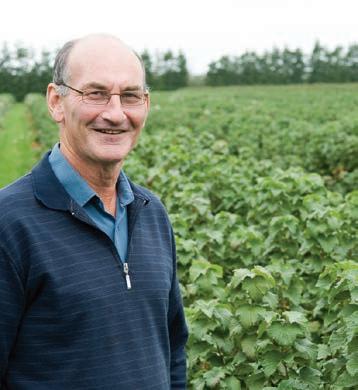
“The big growth surge in the berryfruit industry happened in the early 1980s and I helped set up the blackcurrant, boysenberry and blueberry organisations. Once Berryfed (the Berryfruit Growers’ Federation) split up, I became very involved with the strawberry organisation as well as the others.”
Hopes were high then for the future of the New Zealand berryfruit industry. “None of them has turned into the next kiwifruit, despite predictions from some people back in the 1980s. The fact that they are all still in business suggests they have all had a degree of success.”

Among the highlights of Geoff’s career are breeding new blackcurrant varieties and solving the mystery of the boysenberry decline disease that was wiping out the industry.
“In the early 1980s in Northland, Auckland and South Auckland, a disease showed up rendering the fruit sterile.”






The symptoms included stunted multiple shoots emerging from individual buds (witches’ broom) and deformed flowers from which fruit did not develop normally.
“It looked like classical phytoplasma symptoms and we spent three to four years trying to find an insect which was spreading it. Then I had a visitor from the Scottish Crop Research Institute Station who asked if we had tested for Cercosporella rubi infection. We had, but did so again and C. rubi was confirmed.”
As we all know, in the fruit growing industry ultimately everything stems from a twig. We have alliances with some of the world’s best new fruit variety developers and rootstock breeding programmes. These relationships and our continual search for the best cultivars puts us at the forefront of global variety and rootstock development in New Zealand.

Our unique capability across a wide variety of crops and our focus on matching varieties and rootstocks to conditions allows us to offer real, informed advice. Call:
Kate Marshall, 0274 201 033, kate@waimeanurseries.co.nz
Jeff Sandford, 0274 201 003, jeff@waimeanurseries.co.nz
 Renowned New Zealand berryfruit scientist Geoff Langford is the founder of Berryworld
Renowned New Zealand berryfruit scientist Geoff Langford is the founder of Berryworld
In our world of twigs and roots pedigree is everything.
The ORCHARDIST : MAY 2023 43 YOUR INDUSTRY
www.waimeanurseries.co.nz
The fungal infection was successfully treated with existing products and the disease stopped in its tracks in the Bay of Plenty. “We made a lot of boysenberry growers very happy. However, the disease is still around.”
Among the new blackcurrant varieties Geoff has bred to cope with less winter chilling, is one now being grown in the West Midlands of Britain.
“Blackcurrants have a good future because of the relatively low labour input, but in international markets there are constant changes that are always impacting in unpredictable ways.
Indoor production takes out some of the risk, but each production system still has challenges
“Blackcurrants are at the forefront of climate impacts. When I started there were a number of operations in the North Island which have all gone. Nelson is marginal for a number of the commercial varieties, and our focus is to breed new material with lower chill requirement.”
Geoff doubts the industry will use chemicals to promote budbreak. “Given the whole focus of blackcurrant is its health status, growers must be careful what chemicals they choose to use. They would not want to destroy the fruit’s image.”
Constantly breeding for a changing climate is vital if the industry is to survive, but Geoff says it takes at least ten years to bring a new cultivar to market. “We don’t use genetic modification, and while CRISPR gene editing may be used in future, it requires a decent amount of money to develop, and berryfruit are such a minor crop the funds aren’t there.”
Growing berryfruit under cover will be increasingly prevalent. “Trends would suggest indoor production takes out some of the risk, but each production system still has challenges. Getting good returns for high value crops like fresh berries is going to be essential because of the high labour requirement.”
There are no berryfruit varieties named after Geoff, and for good reason: “There is a risk with that. If they turn out to be no good, that is not a good advertisement for you. As an example, I named a blackcurrant variety Ben Mapua and it turned out to not work commercially.”

The name of the not-so-successful blackcurrant was no doubt influenced by where Geoff grew up – Māpua, in the Tasman District, famous as an apple growing region.
“I am part of the Paynter fruitgrowing family, but my uncle was one of the first boysenberry growers in the country. He paid better than Dad, so I have been involved with the boysenberry crop for more than 60 years. The other reason was that John Wilton got the apple specialist role ahead of me. Then the Berryfruit specialist role became available so that suited me just fine.”
Berryfruit scientist Geoff Langford photographed in the 1990s with the blackberry variety Karaka Black, bred by Harvey Hall, which Geoff helped to commercialise
44 The ORCHARDIST : MAY 2023 YOUR INDUSTRY
Geoff in the 90’s
The power of positivity
Jen Scoular : NZ Avocado chief executive


It’s been a rough couple of seasons for our sector, and leading the industry body means there has been a far bit of flack to receive.
Hard as we might work, we can’t stop the flow of South American avocados into “our” Asian markets, we can’t fix oversupply situations in Australia, we can’t prevent weather events and we can’t make avocado trees double their productivity overnight.
So to have the opportunity to be a major part of an amazing global event, happening right here in Aotearoa New Zealand, with all my team around me, has been phenomenal. To get feedback that the event ticked all the boxes, that it was the best ever, is wonderful. There have been times when we have questioned the feasibility of hosting a world congress, the board certainly looked at not hosting the congress a few times, and when we opened ticket sales in June 2022, New Zealand’s borders were still closed.
So welcoming 1160 delegates, 750 from overseas, to the 10th World Avocado Congress in April was a mighty big thing. Watching the interaction, the engagement, the laughter and the hugs across two days of field days and three days of academic programme was heart-warming, it felt amazing. We realised a month or so prior to the congress that the addition of eight field days over two days, sold out with weeks to go, was sort of bigger than we anticipated. Health and safety alone was like organising eight different congresses, except we had to arrange the venue as well, the marquees, the catering, the chairs and tables the port-a-loos. But seeing each bus off before 7am each day I saw engaged, curious, interested, passionate delegates looking forward to seeing a little part of our avocado sector, and throughout the congress I heard their stories, the conversations they had, their learnings.
Planning has happened over nearly five years so you can imagine when little (and big) changes happen with only days to go, things feel pretty scary. But watching the crowds, hearing the conversation, seeing the smiles and laughter and handshakes, you realise that hard work was all worthwhile, that the planning was pretty damned perfect, and as a team we knew we had smashed it. Our team of 12 committed to six days in Auckland, heading up Friday in two clunky old trucks filled to the brim with 1,200 delegate bags, collateral, flags, chilly bins for the milk for the tea and
coffee at the field days. Team briefing Friday night then a 6am meet both days and everyone off on a different bus to a different location. But back they came, energised, exhausted and connected. Our WhatsApp chat was filled with wonderful photos and videos, laughs and stories.
It couldn’t have been better team building. Our KPIs (key performance indicators) were to meet people, to learn, and to have fun, and well, yes, we did that! No-one turned down an invitation to an after-match party; if there wasn’t one, we made one, and boy did we dance our feet off at the gala dinner. I have never felt prouder of what we achieved as a team, and I know the stories will keep our tearoom chat going for many years to come, and I guarantee ours won’t be the only tearoom sharing stories and memories about a magical adventure to New Zealand.
AVO UPDATE
Jen Scoular, President of the World Avocado Congress Committee and chief executive of New Zealand Avocado, speaking at the sold-out gala dinner, which was followed by lots of dancing
The ORCHARDIST : MAY 2023 45 YOUR INDUSTRY
Catch up with the 5+ A Day Charitable Trust’s Activities
The 5+ A Day Charitable Trust continues to promote fresh fruit and vegetables to encourage all kiwis to eat 5+ A Day – five or more servings of fresh vegetables and two of fruit for great taste, variety and good health.


GROWING GARDENS IN SCHOOLS IN PARTNERSHIP WITH OKE


We have helped build 29 vegetable gardens in Auckland schools so far through our partnership with the OKE Charity. We believe by providing tamariki the opportunity to grow their own fresh vegetables it will encourage them to try them and go on to enjoy them for life.

Here are the numbers:
29 gardens built in 29 schools
18.250 tamariki have access to the school gardens as a learning opportunity

4,500 volunteer hours provided to build the gardens
1,000kg of produce grown across our school gardens
CHECK US OUT ON TELEVISION
We have produced some 15 second television commercials that started on TV3 last month promoting autumn fruit and feijoas. This month we have our persimmon commercial showing followed by winter produce in June.
You can check them out on our social media platforms by following @5adaynz
PARTNERSHIPS ARE GROWING STRONGER
Our partnership with Dame Lisa Carrington continues throughout 2023. Lisa is an Olympian, World Champion and Halberg Sportswomen of the Decade and a fresh fruit and vegetable advocate.

You will see Lisa promoting fresh fruit and vegetables on our social media platforms throughout 2023. We continue our work with the Life Education Trust and the Two Raw Sisters giving us the ability to get in front of students with fresh workshops. The workshops give practical advice and tips on preparing fresh fruit and vegetables from breakfast fruit smoothies to vegetable Pad Thai. New resources have been developed for educators and students to keep the momentum going after the school visits.
EDUCATION
In January this year we sent Early Childhood Education kits to Early Childhood Education Centres nationwide.
Our education resources are centred around tamariki learning about fresh fruit and vegetables in fun and interactive ways. Resources included seeds kindly sponsored by United Fresh member South Pacific Seeds, puzzles, posters and food texture guides produced in partnership with the Heart Foundation.
COMMUNICATIONS


Our communications strategy for this year is focused on the value of fresh fruit and vegetables with the objective of changing the narrative around cost. In season fresh fruit and vegetables are always the best value and our seasonal promotions build on this by providing recipe and serving inspiration.


WEBSITES

Did you know we have two websites? One for consumers www.5aday.co.nz and one specifically for educators www.5adayeducation.org. Be sure to check them out to find out more about 5+ A Day and our activities.
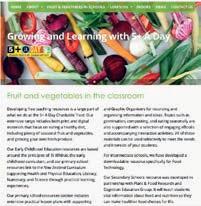



For more information visit www.5aday.co.nz, teachers and educators can access free resources on www.5adayeducation.org.nz
Follow @5adaynz on
#5adaynz
#supportlocal
Early Childhood Teaching Resource GROWING AND LEARNING WITH FREDGE AND 5+ A DAY recycledmade from material recycledmade from material www.5adayeducation.org.nz Follow @5adaynz for fresh inspiration, recipes and prizes. Tag us and use our hashtag #5adaynz to share your fruit & vegetable photos. Follow @5adaynz for fresh inspiration, recipes and prizes. Tag us and use our hashtag #5adaynz to share your fruit & vegetable photos. www.5adayeducation.org.nz
TECHNICAL
THE LATEST INNOVATIONS AND IMPROVEMENTS
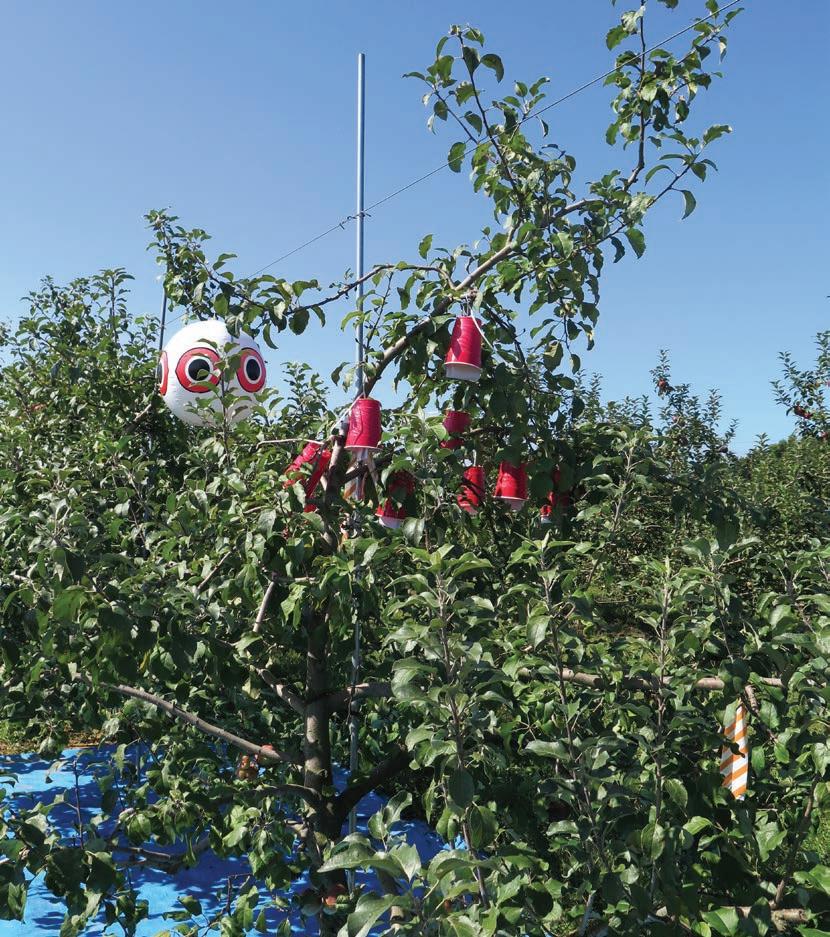 Photo: Anna Rathé
Trap tree with lures for brown marmorated stink bug in an apple orchard in the United States. This causes the bugs to gather in one part of the orchard
Photo: Anna Rathé
Trap tree with lures for brown marmorated stink bug in an apple orchard in the United States. This causes the bugs to gather in one part of the orchard
Tools of the biosecurity trade
During a biosecurity response, officials can utilise a range of biological, chemical and cultural tools to help prevent the establishment and spread of a pest in New Zealand. The Biosecurity Act 1993 provides the Ministry for Primary Industries (MPI) with the mandate to use a range of tools in a response situation, provided any other controls and approvals are met.
Gabi Hidvegi :
We investigated these biosecurity response tools and highlight examples of their contribution to protecting our environment, economy, and way of life from exotic pests, pathogens and weeds.
1 Biological tools: biocontrol and biopesticides
One tool for responding to a pest is biological control –the intentional release of a natural enemy for controlling pest populations. The history of biocontrol in New Zealand is extensive with many biocontrol releases being an insect for the control of an invasive weed (for example Honshu white admiral butterfly for Japanese honeysuckle) or a small parasitic wasp for the control of an insect pest (for example Tamarixia triozae for tomato potato psyllid (EPA, 2023)).
The use of biocontrol is not a guaranteed solution for eradicating an unwanted pest, but instead is a tool that can assist with controlling pest populations. Biological control is important as it offers a chemical-free, cost-effective, and self-sustaining tool that can provide ongoing management of the target pest (Jaiswal et al. 2022). It can also potentially be used in locations where use of chemical tools would be difficult, such as near waterways.
Biopesticides are derived from naturally occurring biological organisms or substances and can be another effective biological tool for managing or eradicating pests (EPA, 2022).
There are two main biopesticide classes:
• Biochemical: controls pests through non-toxic means e.g., chemical lures on traps or mating pheromone disruptors, for example Queensland fruit fly trapping in Auckland in the successful 2015 eradication response (MPI, 2020).
• Microbial: contains natural enemies of the pest, for example a bacteria or fungus in a liquid which is then sprayed in the target pest area.
Advantages of using biopesticides include specificity to the target pest, being efficacious in small quantities and being non-toxic and more efficient at biodegrading than conventional pesticides (EPA, 2022).
2 Chemical tools: chemical sprays and fumigants
Chemical biosecurity tools involve the intentional application of pesticides for the control or eradication of a pest. During a biosecurity response, chemical pesticides (with the appropriate approvals) offer biosecurity officials an effective tool capable of rapidly controlling target pests. Application types can include:
• Sprays – spray bottle or canister for flying insects in localised areas
• Certified operators with knapsacks
• Fumigation – gas or vapours to kill pests in an enclosed space, for example containers
• Helicopters and drones – aerial discharge of chemicals over targeted areas, for example individual treetops
• Aircrafts – more extensive aerial spraying.
The choice of application method is dependent on many factors such as the type of pest (for example pathogen vs insect vs weed), level of infestation, environment (for example productive land vs urban vs native estate), location, health and safety and regulatory guidelines (Deskera, 2023).
Each of these application methods have their advantages and disadvantages. For example, spraying by aircraft enables the operator to cover a much larger land area than targeted spraying by a drone. However, the potential for adverse impacts to any susceptible non-target organisms is greater as the spraying is not targeted to individual trees (Chagnon et al. 2015).
During a biosecurity response, time is critical and chemical tools can be the difference between a successful eradication attempt or not. Pesticides are an important tool as they are relatively fast-acting, efficacious against the pest, and versatile as they can be applied using different methods.
HortNZ risk policy advisor
The ORCHARDIST : MAY 2023 49 TECHNICAL
3 Cultural tools
Cultural tools refer to the physical and mechanical practices used by people to change the environment to make it undesirable for pests and diseases. These tools and practices can include:
• Crop rotation to distance a soil pathogen from the susceptible host
• Removal of weeds by hand or controlled burn-off
• Pruning of infected plant material or removal of host plants
• Grazing stock for weed consumption
• Removal of ‘waste’ fruit from crops to prevent pest reservoirs
• Humidity control to make the crop environment unsuitable for pests or pathogens to thrive
• Trap crops to lure pests away from the primary crop.
Cultural tools are generally environmentally friendly compared to conventional agrichemicals
Cultural tools such as host removal can be critical in a response as it changes the suitability of the environment for a pest that is reliant on one type of crop. For example, the pea weevil was discovered in Wairarapa between 2016 and 2017 and was successfully eradicated through a number of cultural tool methods such as banning the movement of pea products out of the region and halting pea production, which effectively starved the weevil
population (MPI, 2023). Trap crops can also be used to lure large numbers of pests to a favourite host where they can then be collected and treated or removed from the population.
Cultural tools can be longer-term, for example crop rotation, or can have immediate, observable benefits, for example the physical removal of weeds. Other benefits include long-lasting impact such as stock continuously grazing to consume new weeds before they set seed. Cultural tools are generally environmentally friendly compared to conventional agrichemicals as no chemical application is required (Bugwood, 2012).
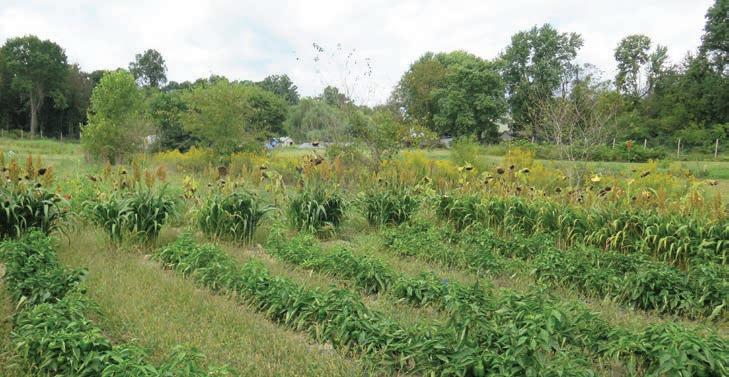
Integrated use of tools
In many instances two or more of these tools are used simultaneously to maximise the chance of eradication or long-term management success. The use of multiple tools can improve the outcome by targeting different life stages of the pest, removing individuals from the incursion population, knocking down mobile life stages to prevent further spread, making the environment at the site of detection less favourable for establishment and preventing mating. In many cases, using an integrated approach lessens the chance of the pest establishing. If it does establish, a combined approach can slow the spread and reduce the impact of the pest.
Many growers are familiar with integrated pest management and will use a range of the above tools in their usual production practices. The same types of tools are deployed for biosecurity incursions, and all are important for protecting our sector from exotic invaders.
Outdoor capsicums in the United States surrounded by a trap crop of sorghum and sunflower to attract brown marmorated stink bug away from the crop
50 The ORCHARDIST : MAY 2023 TECHNICAL
In the driver’s seat: optimising your future
Time to make some decisions… again. JONATHAN BROOKES from AgFirst steers us through the drivers of change in 9 quick laps. While this track is specific to apple growing, the overarching idea apples to all orcharding sectors.
Market conditions, cost inflation and climatic disasters have focussed a natural process within the horticultural industry, and many growers are waking up and having to make big decisions around what to do going forward, to make the most of the options available. The need for change is ongoing. The tricky part is that those who make the wrong changes generally fail, those that make too many changes often fail, and the biggest challenge to business is to those that make no changes at all and eventually get left behind.
This can all seem a bit doom and gloom, but it is important to recognise that New Zealand is a fantastic place to grow fruit and vegetables. Even with a changing climate, market challenges, increasing costs, and environmental pressures, we are still world leaders of horticultural production.
The option for profitable new varieties is as strong now as in the past, and most varieties provide new growers a level of support around the learning process. New growing systems are equally as exciting, but with the warning that extra expense does require extra performance to give an investment return.
Remember that Formula 1 cars do go fast but not many people can drive them without crashing. They need skilled drivers, a full support team and a lot of cash up front.
Lap 1
What needs to be changed in my orchard?
How well do you know your existing business and where opportunities or threats might exist for the future? Drill down into the business and find out what parts fit with your plans.
What are the current financial results of each block within your orchard?
Are you fixing the ‘greatest limiting factors’ first?
Have you identified the ways to make improvements?
How much needs to be changed? Short term, medium term, long term?
Do you have time to get a payback on block improvements? Will this add value to others?
It is key to understand where each orchard block fits in amongst the rest of the pack. Blocks should be benchmarked against others of the same variety to allow for a very frank question to be answered:
In my blocks that are not financially performing, am I a good grower of a poor variety, or a poor grower of a good variety?
To use the car analogy do I blame the car? Or the driver? Or both?
You need to fully understand both the production and profitability of every block, as well as your entire business, to get a clear picture of what needs to change for the future.
Lap 2
What should I do to my business going forward?
There are many different options for growers to consider:
Do nothing and carry on as normal.
Look to the existing variety blocks and identify improvements (production and cost improvements, risk mitigation) and then deliver them.
Remove variety blocks that are not performing and can’t be fixed.
Look at upgrading blocks (varieties, canopy systems).
Lease for some passive income.
Sell properties to reduce debt.
In my experience, the best solution to fix orchard businesses is often some sort of combination of all or any of the above. Growers should be continually positioning their business to get the best results possible. However, success is personal, so it is important to consider how this specifically looks for you (including skills, time and resources).
The ORCHARDIST : MAY 2023 51 TECHNICAL
Remember that not everyone wants to drive a Formula 1 car, or has the skills or cash to make it happen. Some people will make it to be the winning drivers, some want to be team owner or part of the pit crew, others are happy just having a bit of fun at track days, or even retiring and watching it from the stands. Improvements made in Formula 1 racing do eventually trickle down to everyday cars and become mainstream in the future.
Lap 3
Start with your big picture goals
Build a plan around your key business passions and dislikes. This will then give you a set of guidelines, allowing you to look at what you need to change going forward. Consider this checklist of interrelated topics:
Work satisfaction – what gets you up in the morning?
What gets you up in the morning? Is it learning success with a new variety or system, or knowing that you help in feeding the world and providing employment to others? Being a grower comes with a lot of challenges, it is almost impossible to succeed if you are not passionate about what you are doing.
Financial results
Is money a key driver for you or just a necessary output of your business? Are your varieties and planting
systems financially future proofed, and how do you feel about extra debt?
Business risk and reward
Do you know the next big challenge that is likely to affect your business? Who is helping to guide you in your decision making? Growers are by nature risk takers, however for some growers mitigating risk might be more important than optimising reward.
Future time horizons
How future proofed is your existing orchard, for the next five years, ten years, 20 years? Do you have a business succession plan, do you need one? If you are looking to upgrade your orchard for yourself what does that need to look like; if you are setting it up for others what will they want?
Operational management
To be successful as an orchard business you need those involved to be fully engaged. Therefore, how much effort are you willing to put into your business going forward? Are you looking for a foreman or manager to assist, or is downsizing a better option? Decreasing the operational management generally means decreasing the potential profit. For some growers this might be the preferred future option.
Staff requirements
Is your orchard set up to minimise labour input, and how much focus do you put on labour efficiency and effectiveness?
Understanding the production and profitability of every block: data from the AgFirst OrchardNet database benchmarks the actual gross yield performance by tree age of a particular apple block (light green) versus the variety average and variety upper quartile. The block is performing at upper quartile levels compared to other blocks of the same variety
Database New Zealand Average Gross Kg/ha
Database New Zealand Upper Quartile Gross Kg/ha
Kg per ha 120,000 100,000 80,000 60,000 40,000 20,000 0 0 1 2 3 4 5 6 7 8 9
Tree Age (years) (All Planted Trees)
52 The ORCHARDIST : MAY 2023 TECHNICAL
This block is performing well against the benchmarks
Labour costs are a significant part of horticulture and are unlikely to change in the short term. Some blocks are unlikely to be viable for the future unless solutions are found around reduction in costs or increased returns, both of which are difficult and sometimes impossible to find.
The future of fertiliser
Lap 4
You should end up with a simple statement around your business, for example one of the three statements here
Example A
“I aim to be an excellent grower of mainstream profitable varieties. Blocks losing money need solutions, or else must be removed from the orchard. The orchard business needs a focus on five percent area replacement annually to manage debt but keep the business moving forward, either by full tree replacement or grafting over. Changes will lead into a planned succession or lease in 2030. I want a small team of high quality engaged people around me including full-time locals and returning Recognised Seasonal Employer (RSE) scheme workers to help run the orchard. My focus is on solutions targeting yield and quality improvements and maximising young trees.”
More yield, less disease, better shelf life. Levity Crop Science now available in New Zealand.

Dr David Marks – well published plant physiologist –has created the future of smart fertilisers.
Using knowledge of plant issues and inventing new compounds to influence mobilisation, Levity Crop Science have changed the way we look at Nitrogen and Calcium.
Scan the QR codes to see how we can help your crop issue:






Lono Root development and growth partitioning, increased yield

Albina Increased Calcium uptake, better fruit retention


Sulis Colour and Brix, shelf life




Example B
“I am an owner operator of a family business that has been orcharding for 40 years. I’m at an age and stage where the current orchard variety mix is not sustainable for my business into the future. I don’t want to become heavily indebted, and I do not see clear succession plans within my family for the business. I am happy for the orchard land to be leased and it has good climate management solutions around frost, drainage and irrigation. The location of the house on the property currently suits my family.”
Example C
“I am relatively young and passionate about this industry going forward. I am currently employed by another grower but am looking for the potential to get into the business with some skin in the game. I see opportunities in investing in small areas of high value, high production varieties, and most of the work I would initially do myself.”
Damu
Boron and Molybdenum
Zeme
Silicon for reducing disease and susceptibility
Indra
Antioxidants reducing stress, higher resilience to salinity, drought, heat, wet
Levitycropscience.com
Contact Michelle Osgood Seed & Field Services SI Ltd Ph 021330676

The ORCHARDIST : MAY 2023 53 TECHNICAL
Where are you at and where are you going?
Once you have looked at the current state of your orchard business and where you want it to be in the future, you need to plan your next move. Planning the correct path forward is very important and should not be taken lightly, but doing nothing and expecting things to improve is also not going to cut it.
The risks and rewards of making orchard business changes
New Zealanders are proud of their No 8 wire heritage, being innovators and problem solvers. This also brings potential risk from serious failures and mistakes made along the way. Make changes for the right reasons for you and your situation, but be aware of the risks and rewards of these changes, and the requirements needed for them to be successful.
• The costs are highly influenced by marketed yield (fixed costs), things such as debt and management decisions also have an impact.
• The key is to target both returns and costs to maximise profit margin.
The next key information is the profit per ha.
Profit / ha = Yield (packed TCE / Ha) x Profit margin ($ / TCE).
How to quantify what makes a good change for your business
Good changes give the best return for your investment either in money terms, time or resources. This could also include managing potential future risks such as climate challenges (flood, drought, frost, hail, heat…)
Understanding Orchard Profitability
Growers need a thorough understanding of the yields, returns and costs for each block.
The first important driver is understanding – what is the profit margin?
Most apple growers think in packed tray carton equivalents – TCE (18.6 kg). This is the harvested TCE x the pack-out percentage. For other crops this could also be shown as profit per marketed kg.
Calculating a TCE profit margin is simple: the returns
$ / TCE – less the cost $ / TCE
• Returns are not only impacted by variety but also what quality, size and colour is achieved.
• If profit margin is low, it takes significantly more packed yield to improve the profit / ha. In these situations, it is very hard to justify extra expense.
• Extra expense needs to significantly increase profit margin by either dropping cost or increasing revenue.
Lap 6
Making changes that are suitable for your business
As I mentioned earlier, not everyone can drive a Formula 1 car and this does not always mean the car is at fault. There are many examples of new grower practices, tools and ideas that have the potential to either be a poor or good business decision depending on how they are used.
A good example is the adoption of highly intensive planting systems. Growers need to learn how to drive these systems properly, and learn what value to expect out of them to make them a sensible investment.
Lap 7
Looking at the cost of new high density planting systems
Canopy costs for a simple 3D Spindle (3.6m x 1.5m) vs a Narrow Twin Stem (3m x 1.2m) apple tree show a difference in development cost per ha of around $40,000. A 20-year block life cycle needs an extra $2,000 per ha per year to pay back the $40,000 extra investment.
Pitstop
Lap 5
Return –$ / TCE Cost –$ / TCE Profit Margin –$ / TCE $40 $35 $5 $32 $30 $2 $48 $38 $10
Gross T/ha Pack-out % Packed TCE Profit Margin $ / TCE Profit $ / Ha 80 75% 3226 $5 $16,216 100 75% 4032 $4 $16,216 80 85% 3656 $10 $36,757 100 80% 4301 $5 $21,622 60 85% 2742 $15 $41,351
54 The ORCHARDIST : MAY 2023 TECHNICAL
Many growers suggest that the value in high density planting is in achieving early yield.
9.3 80% 400
4.7 80% 200 $10
3.1 80% 133 $15 $2000
The above table shows a $5 profit margin variety needing around 10 T/ha every year to break even with the increased investment cost. I am not aware of quantified comparisons where high-density blocks have achieved an average of 10 T/ha improvement every year for the 20 years.
Other risks include -
• Potential for increased excessive vigour and the need for expensive growth regulators.
• Fixing stems to wires goes from $3,427 to $11,111 on an 8-wire trellis.
• Costs for pruning and thinning are calculated on a piece rate per tree (greater cost / ha).
Lap 8
Where very high-density plantings should provide extra value
There are some areas where very high-density production should justify its cost even assuming that ultimate cumulative yield is not going to be significantly increased.
Higher density should be expected to give some early yield production gains.
Improvement in consistent fruit quality or maturity allowing for greater efficiency and effectiveness of pickers. Harvest cost savings of $10 per bin over 200 bins per ha is $2000.
Narrow systems should allow for gains in labour efficiency and effectiveness for both pruning and thinning. Easier to make rules and assess work quality –more consistent quality at harvest.
Very high-density systems are also better suited to labour management platforms with the expectation that the current use of ladders in orchard will reduce in the future.
These systems are suited for future mechanisation (leaf blowing, pruning, harvest).
These systems are also better suited for digital assessment (counts, fruit size, vigour).
A greater proportion of fruit should be harvested cost effectively from the ground.
80 85% 3656 $10 $36,757
The table above shows a ten percent lift in the pack-out percentage does give a small lift in the overall profitability. The table also shows that lifting the profit margin (achieved by specifically targeting a higher percentage of higher value fruit – fruit size, fruit colour etc) significantly increases the potential profits.
Good changes give the best return for your investment either in money terms, time or resources
Many of these potential advantages are not being realised by the early adopters. Factors such as site preparation, tree quality and timing of tasks can easily be compared to a race team that does not know how to set up the car correctly, or the driver not being experienced enough behind the wheel. Higher performance comes at a cost. On orchard, that is usually a need for greater precision and understanding to get the desired results.
Our orchards are at a crossroads of change, like a racing team looking to a new year of racing
What are you going to do going forward?
Carry on the same as you always have?
Buy a new car design and look to get to the front of the pack?
Fix up the old car and make it as fast and reliable as possible?
Keep the race team but allow someone else to drive?
Lease out the car and look for a job as part of the pit crew?
Retire and come down to the track on race days to see what is going on?
Gross T/ ha Pack-out % Packed TCE Profit Margin $ / TCE Profit $ / Ha
$5 $2000
$2000
Gross T/ha Pack-out % Packed TCE Profit Margin $ / TCE Profit $ / Ha 80 75% 3226 $5 $16,216 80 85% 3656 $5 $18,378
Lap 9
The ORCHARDIST : MAY 2023 55 TECHNICAL
La Niña ends –what’s next?
Georgina Griffiths : Meteorologist, MetService


La Niña has ended, and the El Niño Southern Oscillation (ENSO) is currently ‘neutral’. This means that local climate drivers, such as the Southern Ocean and Tasman Sea, will be in charge of the New Zealand weather maps through the rest of autumn and into winter. Global forecast models predict that El Niño is the most likely outcome for spring. A cold spring is the usual hallmark of El Niño here, with frequent southerlies across the country.
Major pattern change affects rainfall and soil moisture

March saw a major pattern change away from the easterlies that had plagued the North Island throughout summer. Westerlies became established across the North Island early in the month, with frequent lows affecting the South Island.
Northern regions enjoyed extended spells of warm and sunny weather during March, which helped dry out moisture-laden soils on the back of Cyclone Gabrielle and heavy summer rainfall (Figure 2 ). In contrast, quick-moving and mobile fronts were a common feature throughout March over the South Island, producing a very wet month for most of the South Island, but excluding Nelson and Marlborough (which saw closer to normal March rainfall).
MetService predicted an unsettled April right across the country, with frequent lows and fronts predicted to spawn out of both the Southern Ocean and the Tasman Sea. At the time of writing, the Easter weather maps show an active low affecting the northeast of the North Island, and another major weather system is also brewing in the Tasman Sea.
Figure 1 A time series of the NIÑO 3.4 index, defined as the average of sea surface temperature anomalies over the equatorial Pacific region 5°N – 5°S and 170° – 120°W. When the NIÑO 3.4 index is more than 0.8/less than -0.8, an El Niño/La Niña event is underway
NIÑO3.4 INDEX 4 3 2 1 0 -1 -2 -3 -4 1990 1992 1994 1996 1998 2000 2002 2004 2006 2008 2010 2012 2014 2016 2018 2020 2022 Moderate to strong La Niña May 1998 – March 2001 Moderate La Niña Summer 2007/2008 Weak/short La Niña Summer 2008/2009 Very strong La Niña Summer 2010/2011 Moderate La Niña Summer 2011/2012 La Niña 2020-2023 56 The ORCHARDIST : MAY 2023
A ‘snapshot’ of estimated soil moisture deficit at 4km resolution
Figure 2 Blue colours indicate saturated soils. Orange colours show significant soil moisture deficit (more than 110 mm of deficit), while red colours signal severe soil moisture deficit (more than 130 mm of deficit)
Valentine’s Day split
On 14 February the country was split by severe conditions at opposite ends of the scale.

Drying out in the north
By 27 February the North Island’s moistureladen soils began to dry out.

The south gets a soaking Frequent lows in the South Island created a very wet month, seen here on 21 March.

Rain brewing
In early April soils up and down the country seem dry but weather systems are brewing.
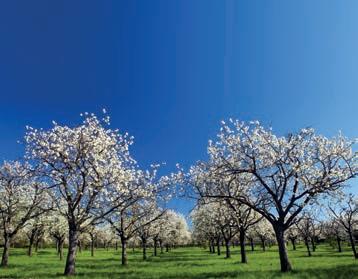

MetService Update Sponsored by:
The ORCHARDIST : MAY 2023 57
Tree trunk injection treatment – AvoJect is the solution


Not particularly noticeable, but the first change of season for the new year has greeted us, as avocado growers start to turn their attention away from harvest operations and towards orchard management and tree health.
Up until the end of “Summerˮ (February 28th, 2023), Katikati has recorded 1,329mm of rain since the start of September. In comparison, for the same period last year Katikati had 604mm. The six-month period saw a wet pollination period and a disrupted export harvest schedule, affecting all in the industry more than initially thought.
Concluding harvest operations, orchard owners are counting their coins; those who have late crops will reap the benefits of an exaggerated price, while others will be focusing on optimising productivity for another year. With the accumulated rainfall we have experienced, high on the priority list should be injecting; a tree trunk injection treatment method that is precise, highly effective and a practical method for controlling Phytophthora root rot in avocado trees.
Avocado trees are highly susceptible to Phytophthora root rot, a disease caused by the soil-borne pathogen Phytophthora cinnamomi. The pathogen is known to survive for many years in moist soil, and it is evident that moisture is a key factor in the establishment, spread and longevity of Phytophthora. Additionally, disease development is enhanced after heavy rain and in waterlogged soils. Once a tree is infected, the disease can cause extensive damage to the root system, leading to reduced uptake of water and nutrients, and a weakened tree that is more susceptible to other diseases and pests. This can result in reduced yield, poor fruit quality, and even tree death.
The most effective way to control Phytophthora root rot in avocado orchards is with tree trunk injection treatments. Tree trunk injection delivers solutions directly into a treeʼs vascular system, ensuring that the substance reaches the intended target quickly and accurately. This method also minimizes the risk of drift or run-off, particularly important for growers who are committed to environmentally sustainable practices and wish to avoid the use of broadspectrum fungicides.
Research has shown that tree trunk injection with fungicides such as phosphorus acid (e.g. HiPK) can provide long-lasting protection against Phytophthora
root rot in avocado trees. The fungicide is translocated throughout the tree, including to the roots, where it can provide ongoing protection against the Phytophthora cinnamomi pathogen.
Trunk injection treatments are easy to apply and can be done by growers themselves using a trunk injection syringe. This makes them a cost-effective and practical option for growers, particularly those with smaller orchards or on restricted budgets.
Given the substantial rainfall New Zealand avocado regions have experienced in the last 6 months, growers need to take proactive measures to protect their trees against Phytophthora. Phytophthora is a serious threat to New Zealand avocado orchards. By injecting trees with fungicides such as HiPK, growers can provide ongoing protection against the pathogen, leading to increased yields, improved fruit quality, and a more sustainable avocado industry in New Zealand.
www.avoject.co.nz
58 The ORCHARDIST : MAY 2023 WHAT’S NEW
Tree trunk injection treatment – AvoJect is the solution
Productivity, traceability and accuracy are key for ABC
ABC Software expanded their core timesheet recording to include time by task, and now offers a range of tools for inventory management.

It has always been a requirement in ABCgrower to record start and end times for workers, to help ensure workers are paid fairly and correctly. For example, the system calculates if a piece worker is entitled to a ‘top-up’ to meet minimum wage. As Remarkable Orchards manager Mark Sim says: “Doing the wages is now so straightforward. It works out top-ups and paid breaks automatically, and because there’s no more paperwork, we don’t agonise over poor handwriting. It really has made everyone happy.”
The minimum wage for piece workers was only introduced in Australia in April last year, and to deal with the complexities of the Australian legislation, ABC introduced “intra-day times”, that is time by task within a day. ABC Software’s founder Sharon Chapman says “the definition of ‘task’ was variable, which meant our software had to be very flexible. It was a challenge, but one we had to meet to support our Australian clients. The silver lining is our New Zealand clients can choose to use it if there is benefit to them in doing so, and at no extra charge.” Berry Farms NZ is one such client, having chosen to record workers’ time in each block to get detailed, highly accurate block productivity and cost reporting.
In April, ABC re-launched its offline time capture module to make it easier to collect time records out on the orchard, including allowing in-app editing, and reducing the potential of data entry errors. Sharon says, “we worked through a season with our clients, listened to their feedback, and I’m excited about the ease of use of
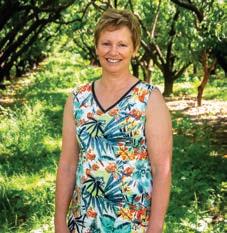
our new version.” Organisations now have a choice of a single start and end time, intra-day times, or a mix of both. ABC has also expanded the inventory management capabilities in ABCgrower. Greater functionality and flexibility mean organisations have traceability to who picked what, from berry punnets to apple bins. A citrus grower can identify the exact location of an individual bin in a de-greening room, and an avocado packhouse can know how many kilograms of fruit are coming on the morning’s delivery. Most recently, ABC has added a palletisation module. Here organisations can scan uniquely barcoded containers onto pallets for the tracking and provenance of their fruit.
ABC Software is currently seeing much interest in ABCspray as growers become increasingly comfortable adopting digital technology. ABC’s digital spray diary and consumables inventory management is a comprehensive package that comes integrated with ABCgrower or can be used standalone. Sharon Chapman observes “I’m passionate about the role of digital automation in the horticulture industry, and my job is to make it accessible to growers and packers. Our goal is to make software that is fit-for-purpose and easy for anyone to use”.
Sharon 06 845 0068, hello@abcsoftware.co.nz, www.abcsoftware.co.nz.
 Sharon Chapman, Founder, ABC Software
Sharon Chapman, Founder, ABC Software
The ORCHARDIST : MAY 2023 59 WHAT’S NEW
Worker time capture on the ABCgrower App
From horse floats to harvesters
When it comes to an engineering challenge, Mark and Alanna Aarts apply Kiwi ingenuity and a ‘can do’ attitude to come up with a manufacturing or repair solution to meet the grower’s needs.
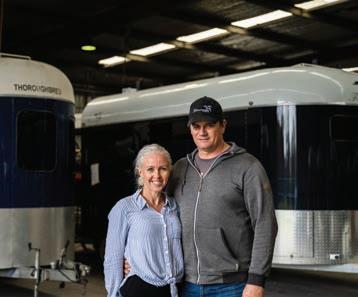
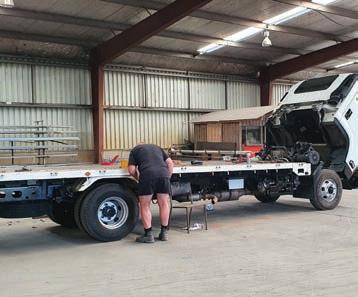
The Aarts family are well known in the Franklin area, with Gerry Aarts and his siblings growing crops around Manurewa, Tuakau, Pukekawa and Onewhero over many decades. When Gerry and Yvonne started a machinery importation business in the early 1980s, (including among their imports the well known Hilder Potato Harvesters), it was perhaps natural that their son Mark might gravitate to this side of the business. Mark learned to modify existing machinery to suit not only their own business and soil types, but also to assist other growers with site specific solutions. This extended to the development of custom manufactured machinery, including their own onion harvester.
Mark continued to develop new and improved horticultural machinery, including cauliflower cutting machines and harvesting trailers, large custom trailers, also modifying machinery for local growers. As the growing side of the business wound down in the early 2000s, a large 2400m2 packhouse on the farm represented the perfect opportunity for a conversion to a re-purposed engineering and manufacturing workshop. Conveniently located in Tuakau, the manufacturing hub is the perfect site to offer growers, truck owners and trainers a ‘drive-in’ repair service. It was at the end of 2011 when Alanna and Mark purchased Thoroughbred Floats. With Alanna’s background in horses and export marketing and Mark’s skills in engineering, they shared a vision to make this long-established name in horse floats the nation’s best. It was a natural fit too with the existing business and ensured good utilisation of the engineering team on site, which by now had expanded under the care and guidance of Mark and Alanna.
“The business has now grown into a major manufacturing, repair and modification hub for harvesters, horse floats, trailers and trucks,” Alanna says. The couple are rightly proud of their thriving engineering business and are looking forward to providing a seamless, solutions-based service to the horticulture and transportation sector across the upper North Island. If you have a challenge for Mark and Alanna contact Thoroughbred
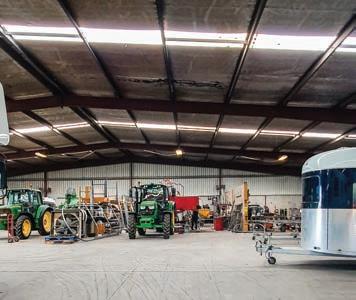
60 The ORCHARDIST : MAY 2023 WHAT’S NEW
Engineering on 09 236 8175
R&D brings new solutions to growers
All-encompassing is how Kevin Manning, Fruitfed Supplies Technical Manager, describes the process of looking for new products to trial by the company’s Research and Development (R&D) team.
Fruitfed Supplies has been conducting R&D trials on products seeking registration in New Zealand for decades, offering an independent assessment of the efficacy of a product in local conditions.
As regulatory requirements become tighter, fewer products are available for use within a crop protection programme. For growers to be able to continue to produce export quality fruit and vegetables, R&D trials of potential new solutions are vitally important.
“Our longevity and involvement in the many layers within the horticultural industry allows us to gain a good understanding of what issues are currently being faced by growers. Our role is to take this information and find the most appropriate products to trial,” says Kevin.
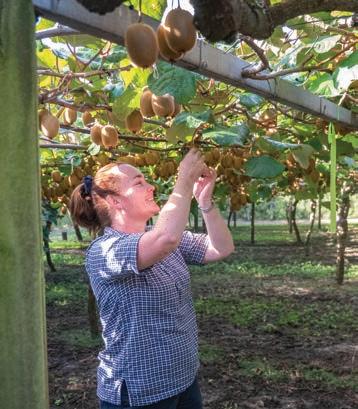
To comprehend what tools are being developed around the world, Kevin travels overseas to visit businesses, universities and research organisations. “By taking this knowledge and marrying it with our discussions with local suppliers and the wider industry here, a complete picture soon forms of what products are suitable for trialling.”
There is mounting pressure on companies around the types of products they can bring to the market, as Kevin explains. “The regulatory environment is becoming more challenging with increasingly strict guidelines around what products can be developed.”
This has seen a move towards biopesticides and biostimulants, for instance. Kevin confirms these made up 30 percent of the products trialled last year in vegetable crops. The challenge is fitting them into crop protection programmes and maintaining good outcomes. It is by trialling a product that these results are found. Trials follow a methodology beginning with site selection. While the company, Kevin says, has research blocks, most trials are completed in cooperation with growers on their blocks. “We’re fortunate growers understand the benefits of these trials, for themselves and for the wider industry.”
In a pest or disease trial, an area is left untreated, while in another area a standard crop protection programme is run. In a third area, the new product is applied at differing rates. This allows the team to assess which rate is the most effective. Once these initial trials are run, in subsequent seasons, the product is trialled within a commercial programme to assess its compatibility.
At the trial’s conclusion, data is presented as evidence to support the claims made on the product label. This information forms a part of the application for registration with the Environmental Protection Authority (EPA) and with the Ministry for Primary Industries under the Agricultural Compounds & Veterinary Medicines (ACVM) Act. This data answers important questions about a product’s safety and efficacy as Kevin explains. “The trials are comprehensive; we want growers to understand a product’s capabilities and fit within a programme.”
Visit fruitfedsupplies.co.nz to view Fruitfed Suppliesʼ products and services, or to find a store near you.
Fruitfed Supplies is a trading division of PGG Wrightson Ltd (PGW). PGW and the writer do not warrant the information’s accuracy, quality, outcome or fitness for any purpose.
The ORCHARDIST : MAY 2023 61 WHAT’S NEW
Erin Garnett, Fruitfed Supplies R&D Technical Advisor
Strengthening the future of horticulture through innovation
Our longevity and in-depth involvement within the horticultural industry allows our Research and Development team to work on the issues that matter the most to growers in New Zealand.

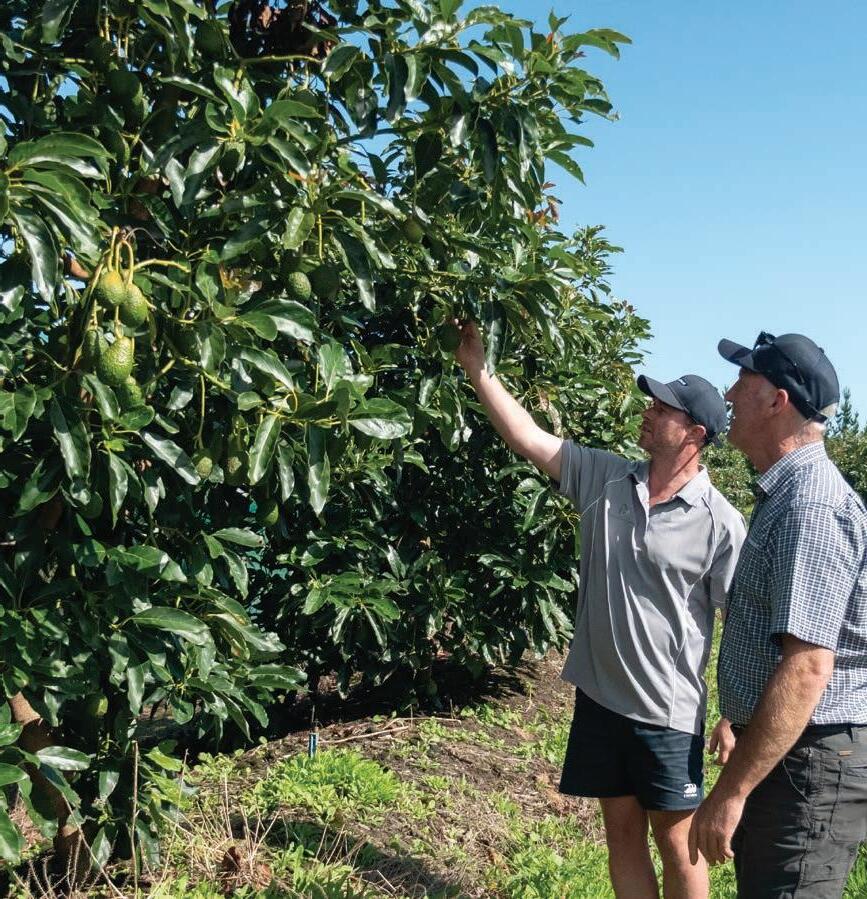
Our local trials look at ways to improve environmental impact and productivity, and combat pests and diseases. They provide growers with innovative products that are backed by reliable in- eld data and an understanding of how they’ll t within a complete crop management programme.

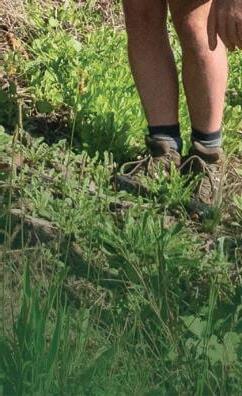
We know horticulture



fruitfedsupplies.co.nz
A trading division of PGG Wrightson Ltd


























 Apple trees flattened by the tornado that came down near Māpua
Photo: Anne Hardie
Apple trees flattened by the tornado that came down near Māpua
Photo: Anne Hardie



 Corpohass Colombia’s Jorge Restrepo with Jen Scoular, President of the World Avocado Congress Committee and chief executive of New Zealand Avocado
Corpohass Colombia’s Jorge Restrepo with Jen Scoular, President of the World Avocado Congress Committee and chief executive of New Zealand Avocado

 The impressive keynote speakers aligned well through the three-day academic programme with more than 130 presentations
The impressive keynote speakers aligned well through the three-day academic programme with more than 130 presentations






 Coach and orchardist Martin Milne with Radio Central Football League owner and coach Shane Norton.
Photo by Aimee Wilson
Coach and orchardist Martin Milne with Radio Central Football League owner and coach Shane Norton.
Photo by Aimee Wilson


























 To diversify the business, half of the 2400 feijoas trees were hauled out in favour of green Hayward kiwifruit
To diversify the business, half of the 2400 feijoas trees were hauled out in favour of green Hayward kiwifruit











 Owner Kevin Jackson and office manager Jill Mansell in front of the new packhouse in Cromwell.
Photo by Aimee Wilson
Owner Kevin Jackson and office manager Jill Mansell in front of the new packhouse in Cromwell.
Photo by Aimee Wilson
















 The audience at the Women in Kiwifruit International Women’s Day celebration in Tauranga at which Yvette Jones presented her Kellogg report
The audience at the Women in Kiwifruit International Women’s Day celebration in Tauranga at which Yvette Jones presented her Kellogg report






























 Photo: Anna Rathé
Trap tree with lures for brown marmorated stink bug in an apple orchard in the United States. This causes the bugs to gather in one part of the orchard
Photo: Anna Rathé
Trap tree with lures for brown marmorated stink bug in an apple orchard in the United States. This causes the bugs to gather in one part of the orchard


























 Sharon Chapman, Founder, ABC Software
Sharon Chapman, Founder, ABC Software









